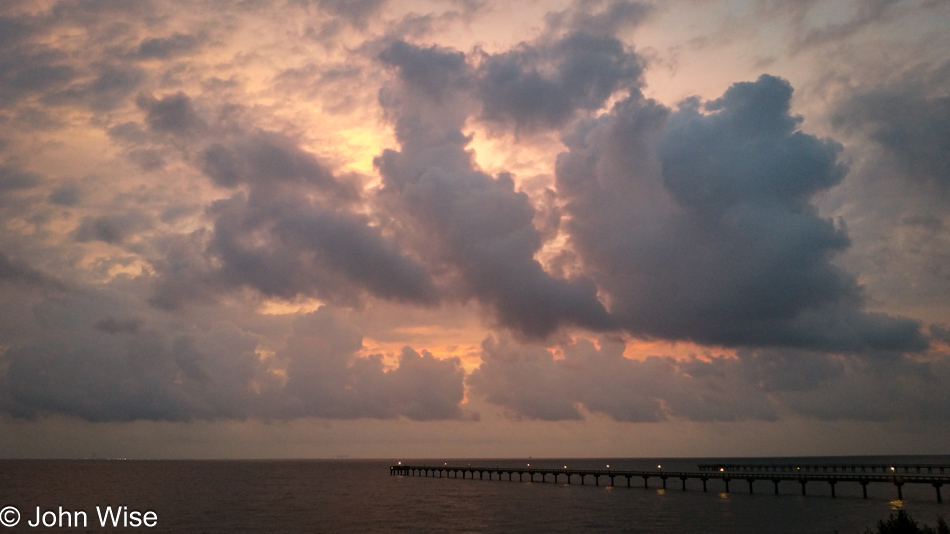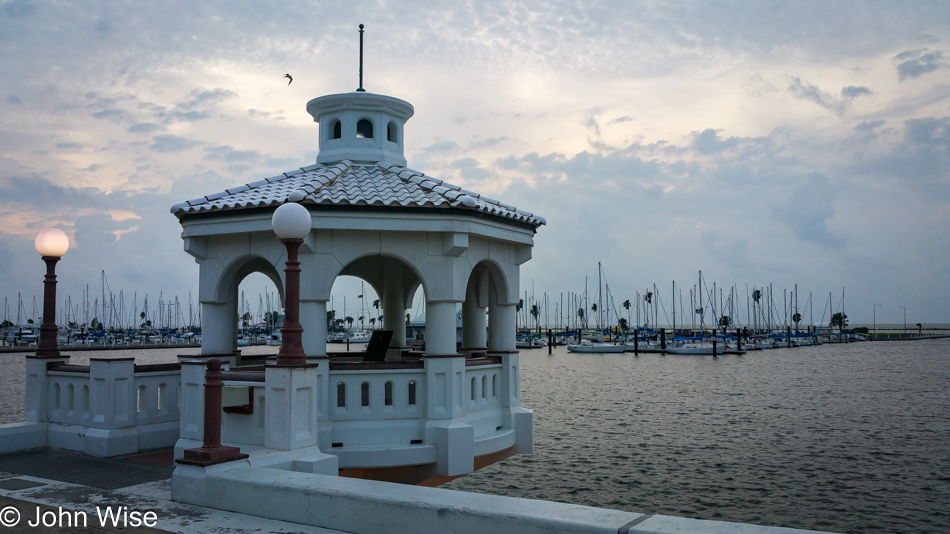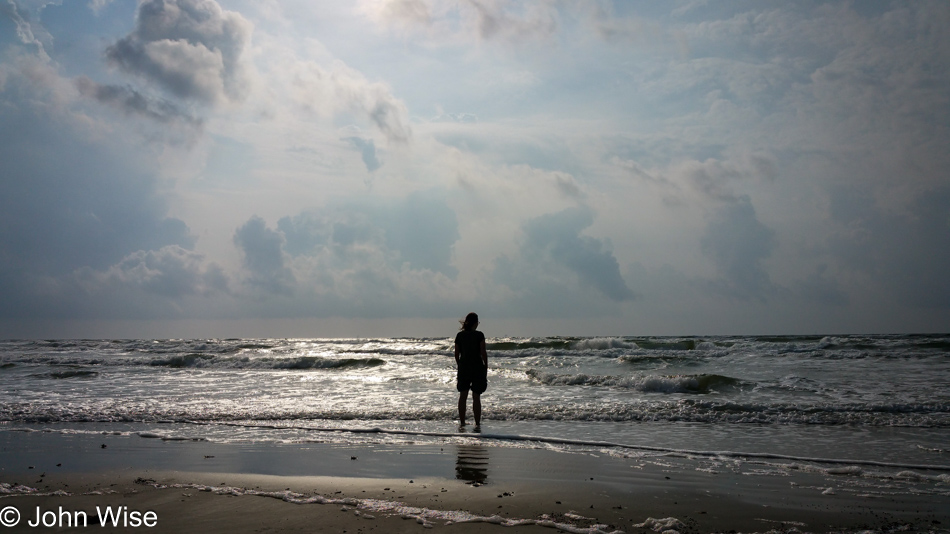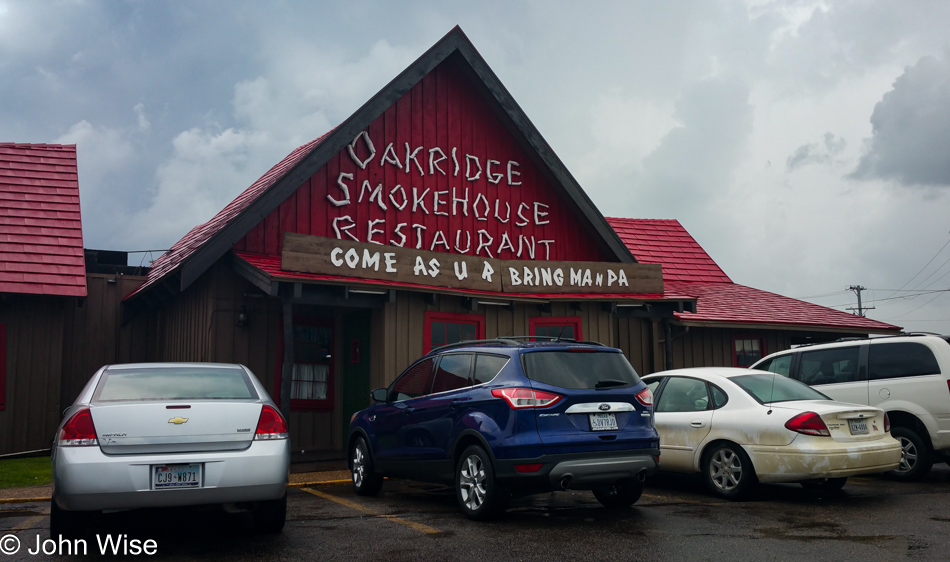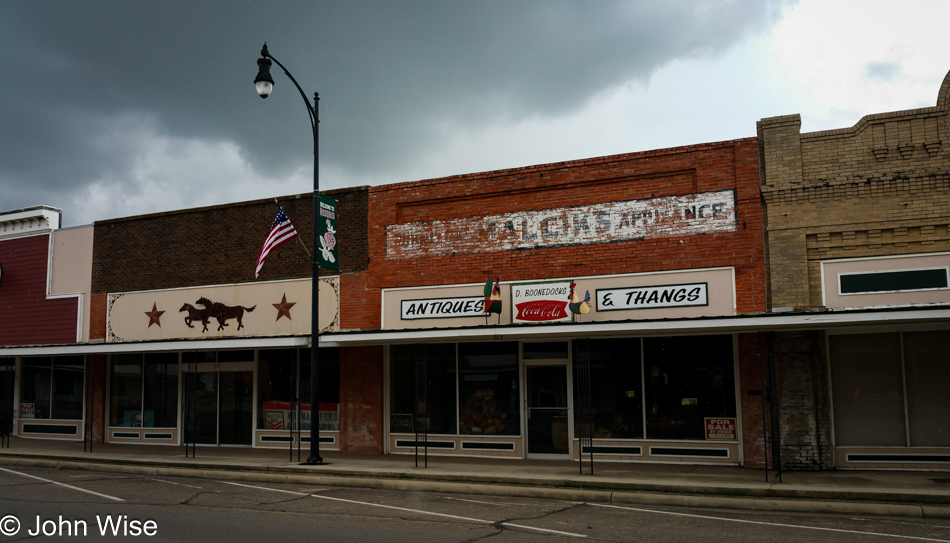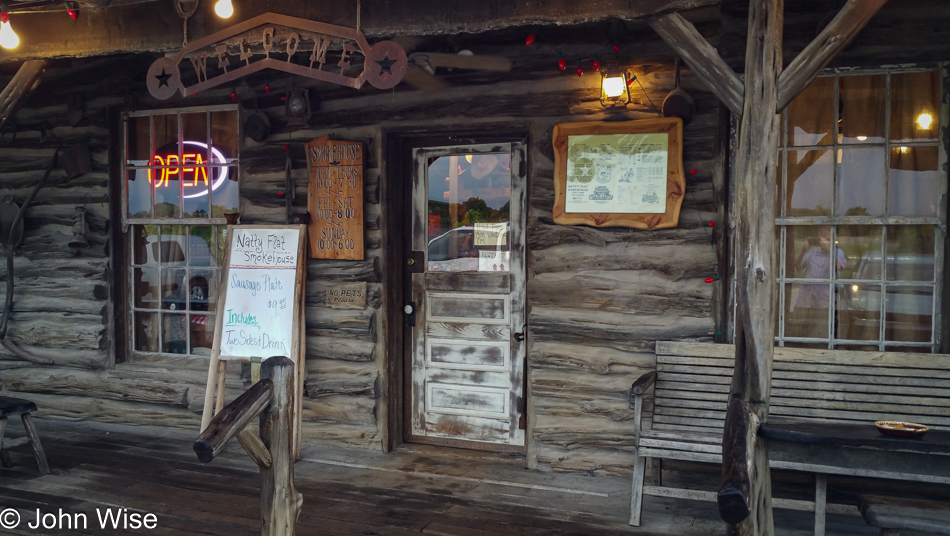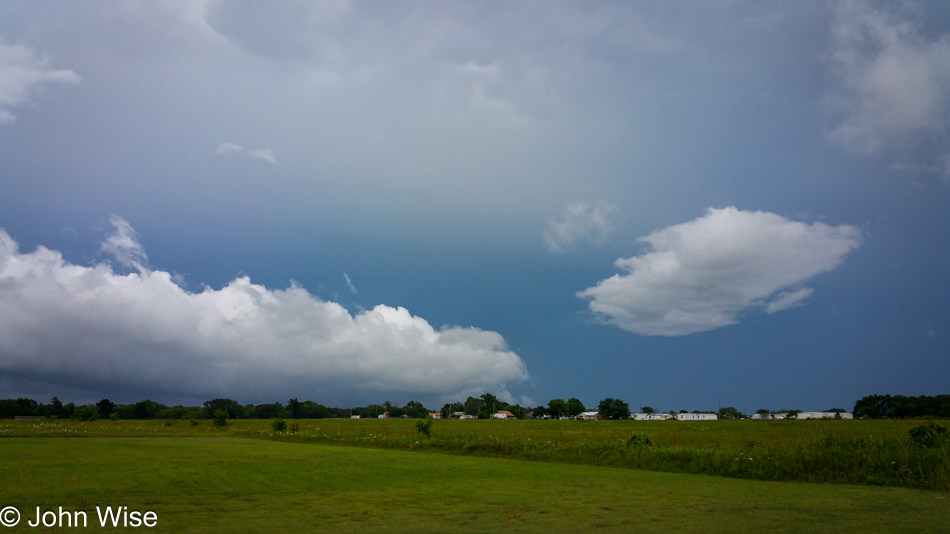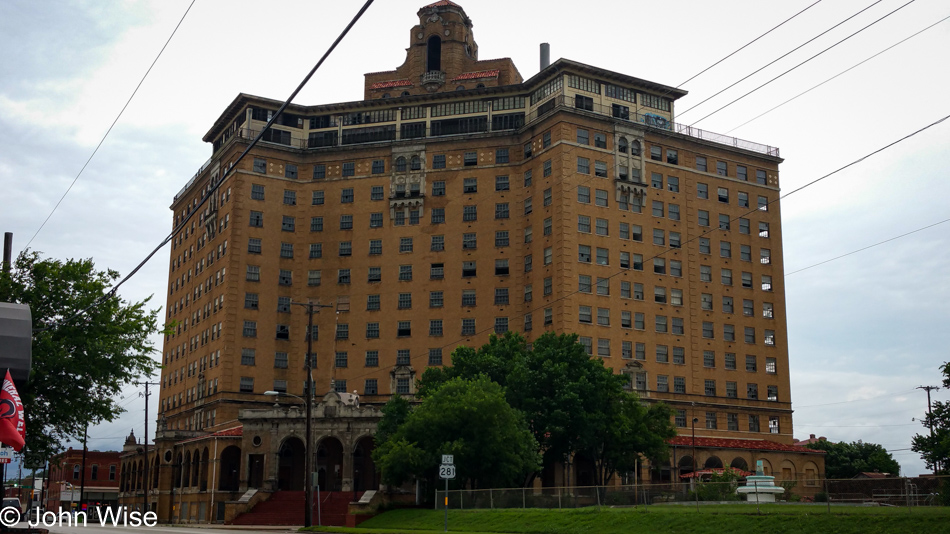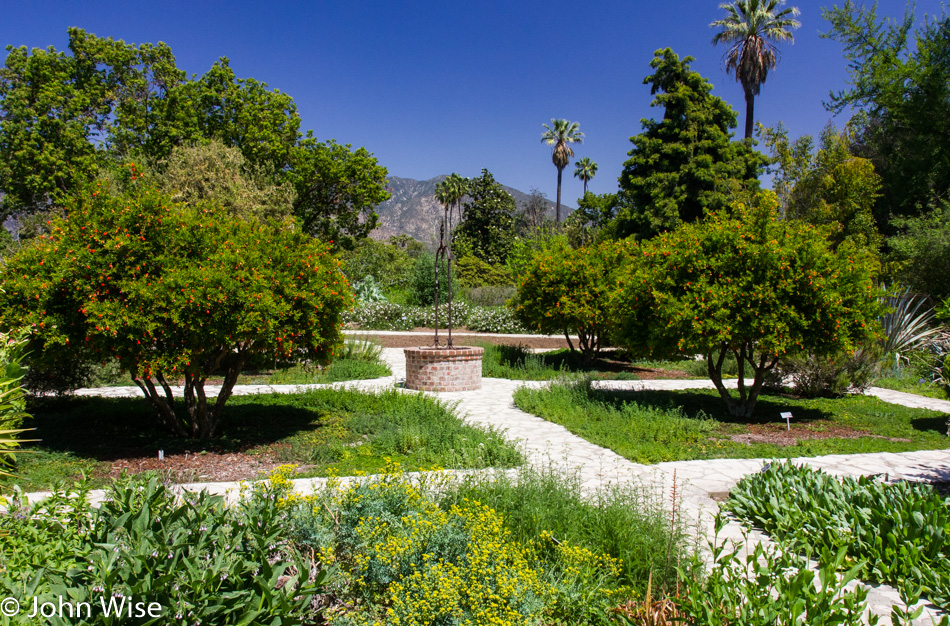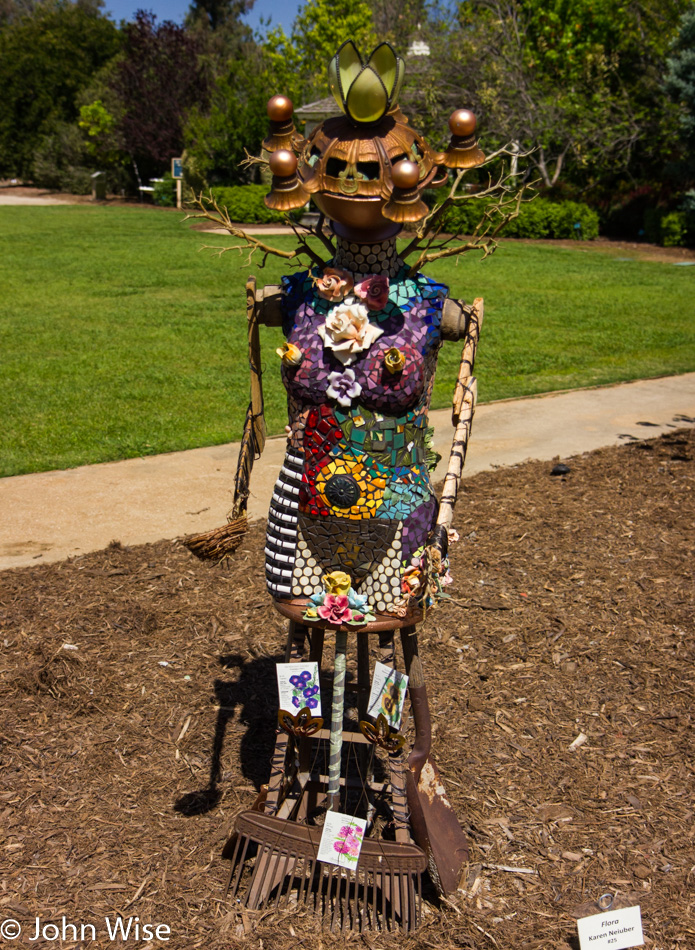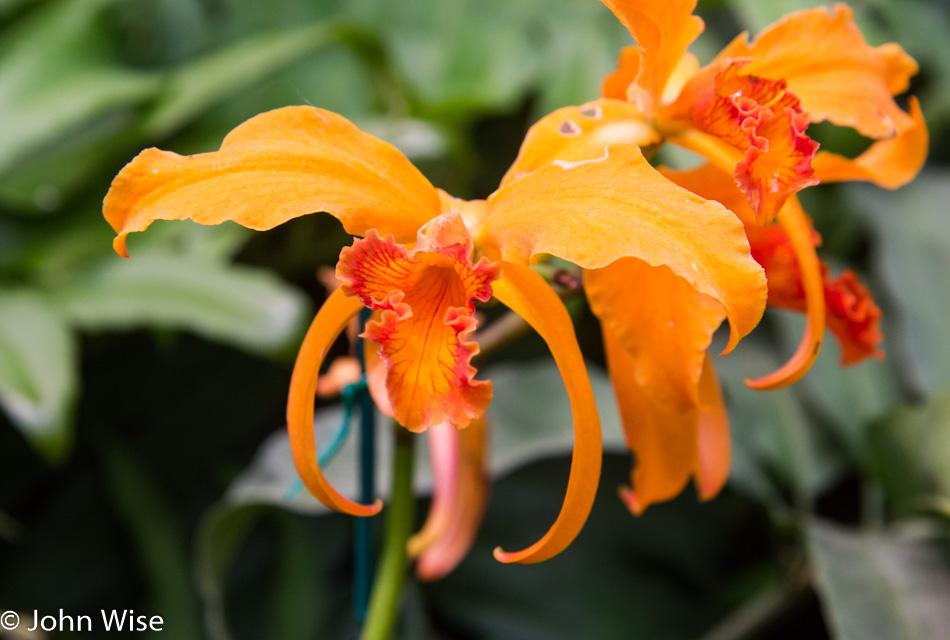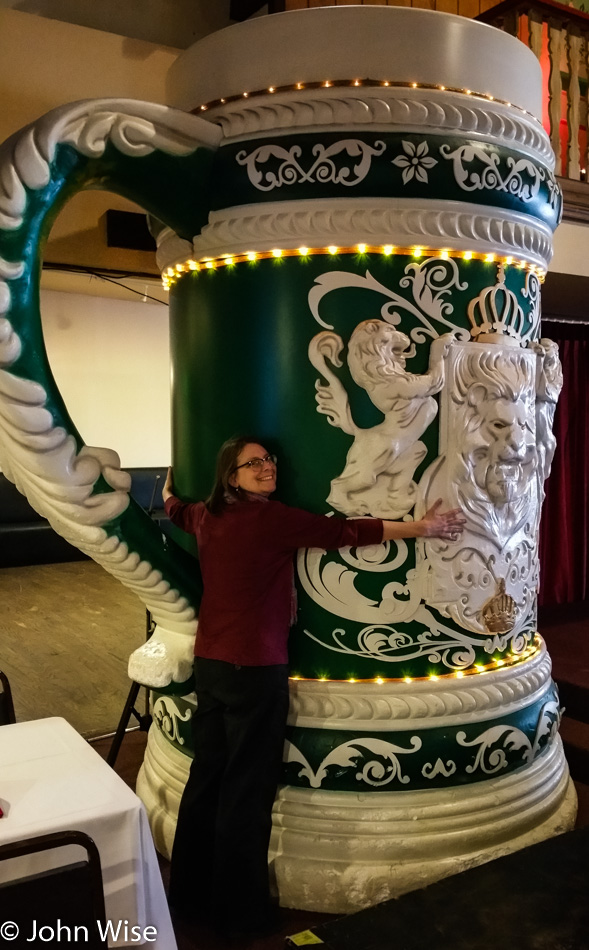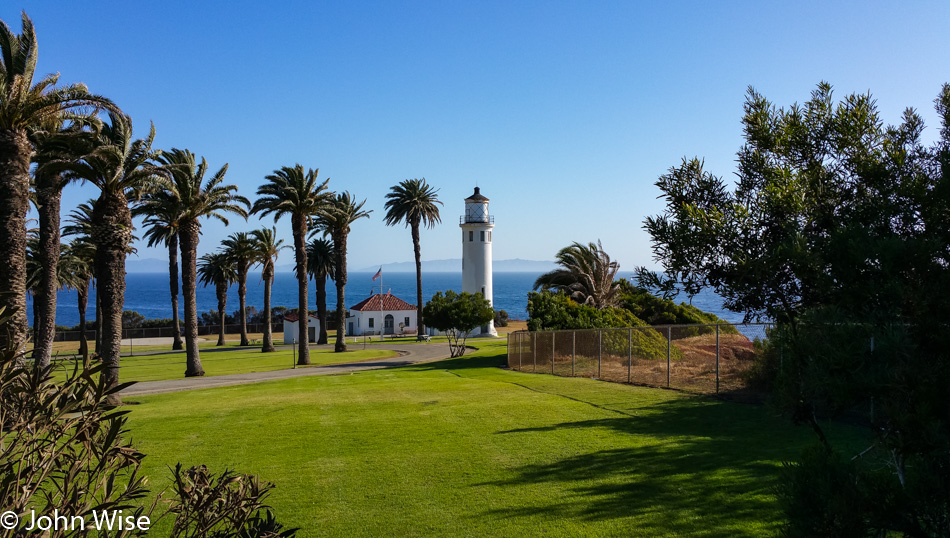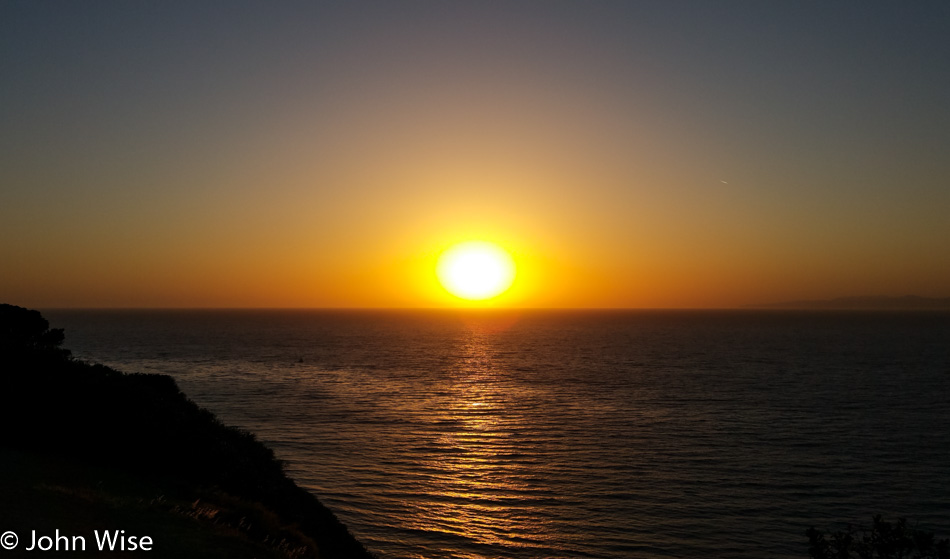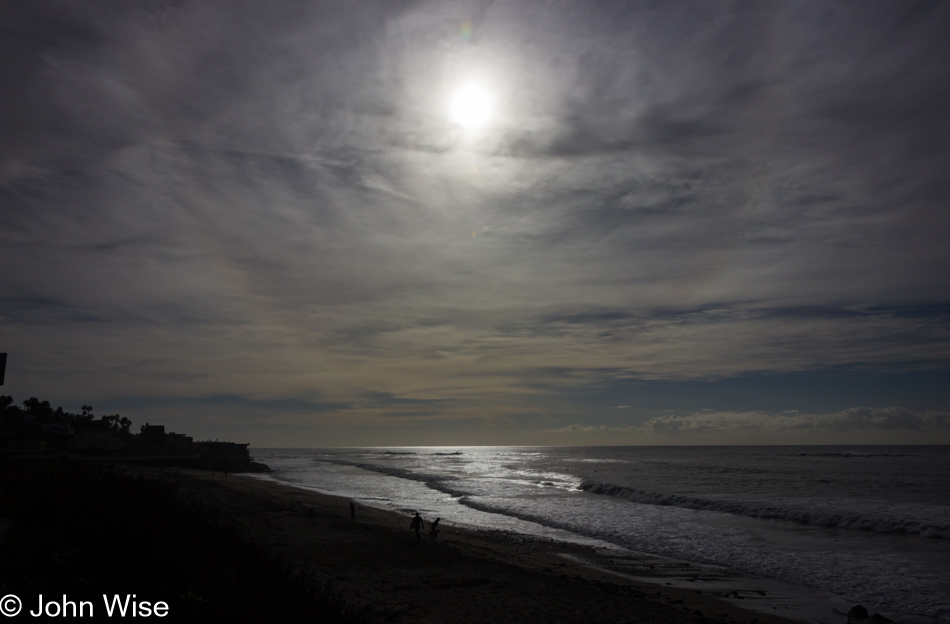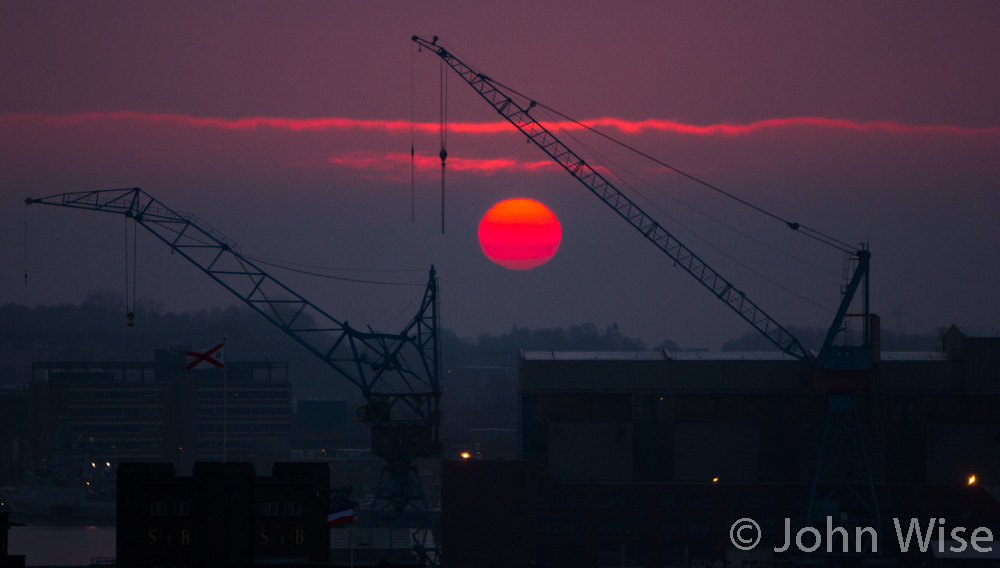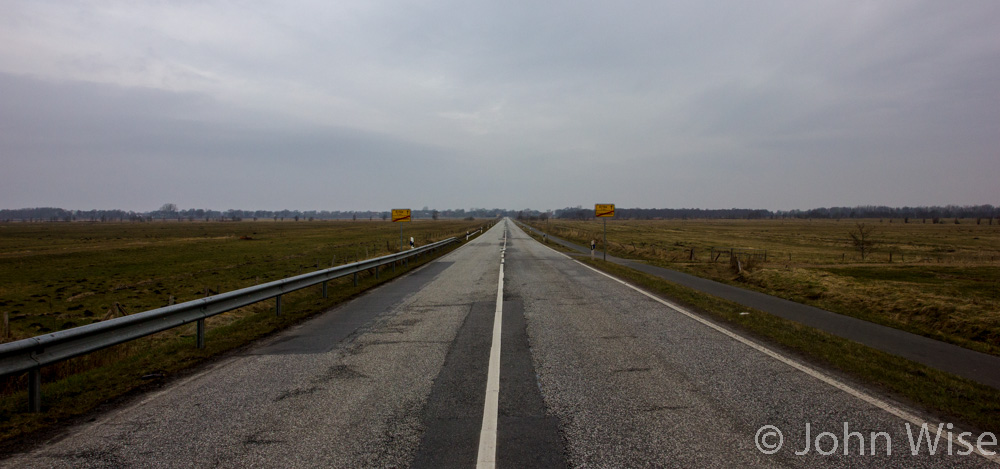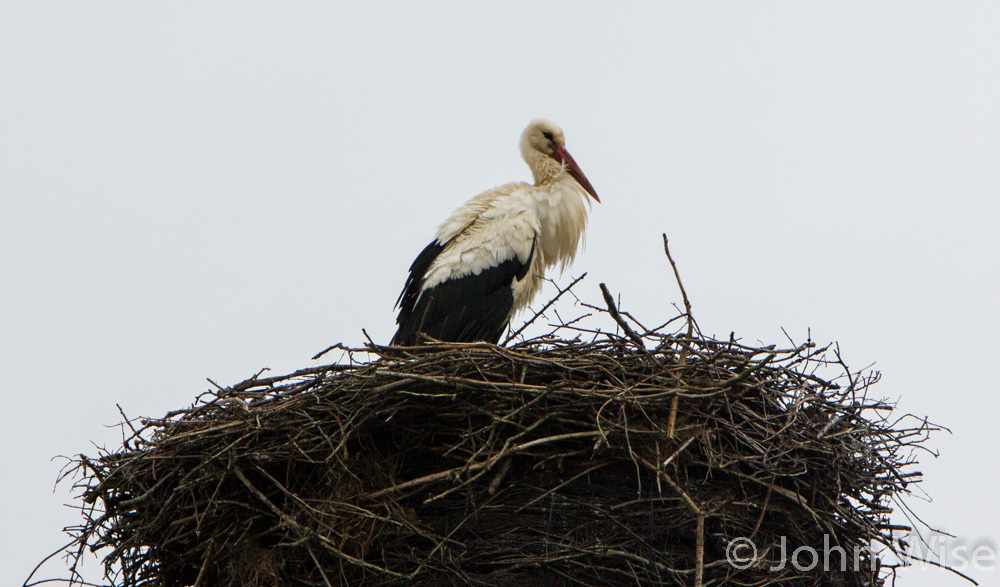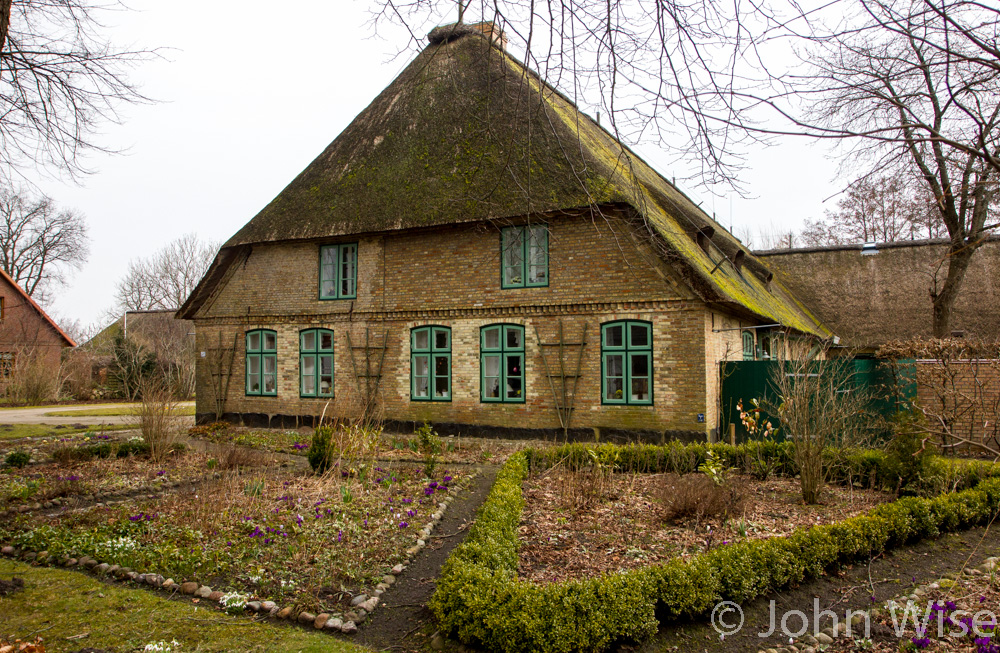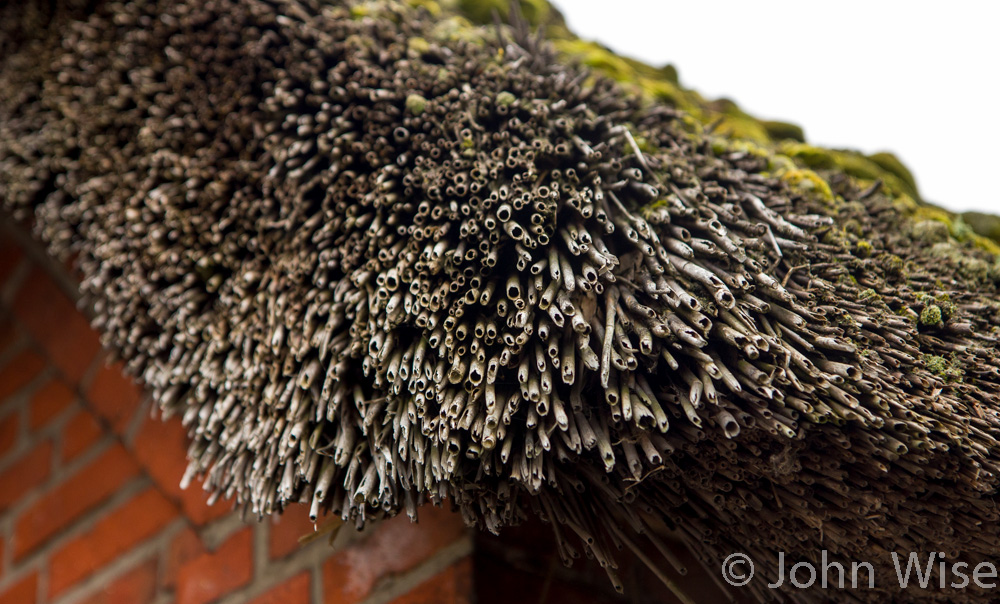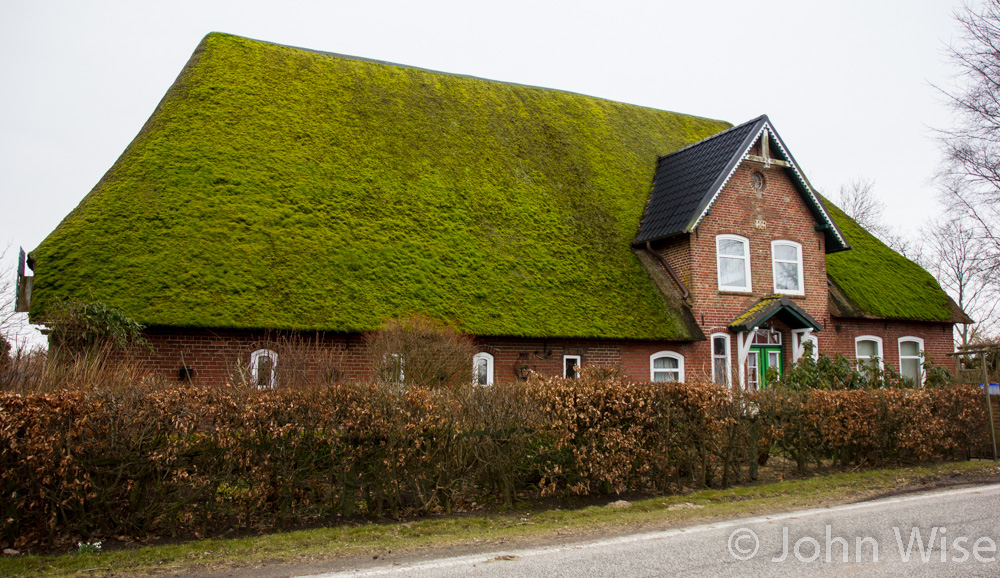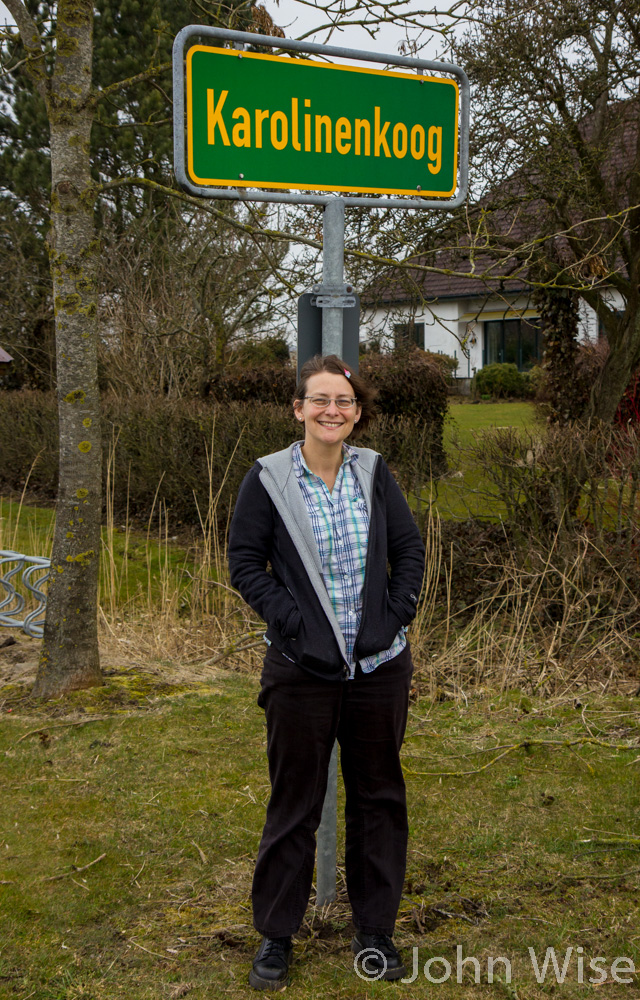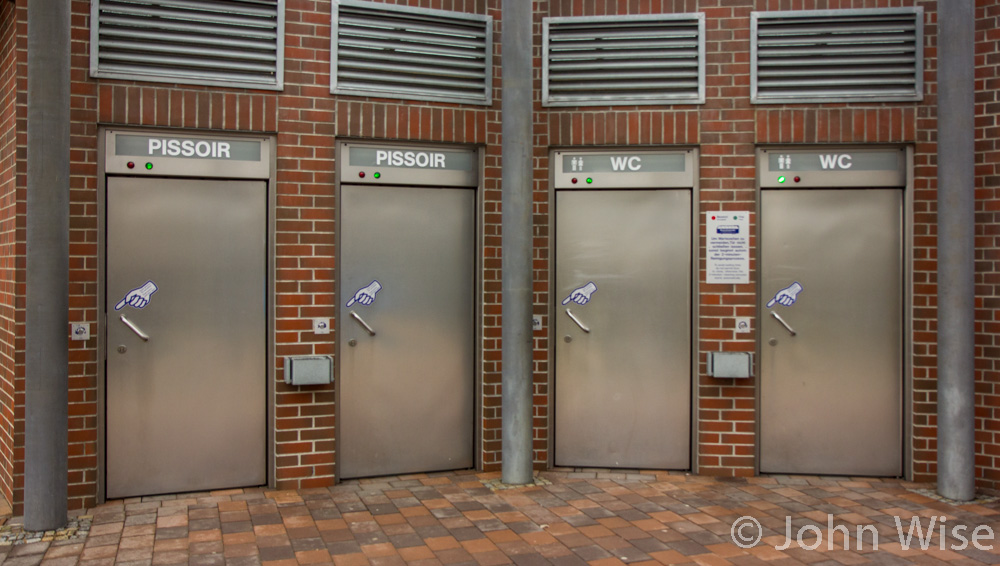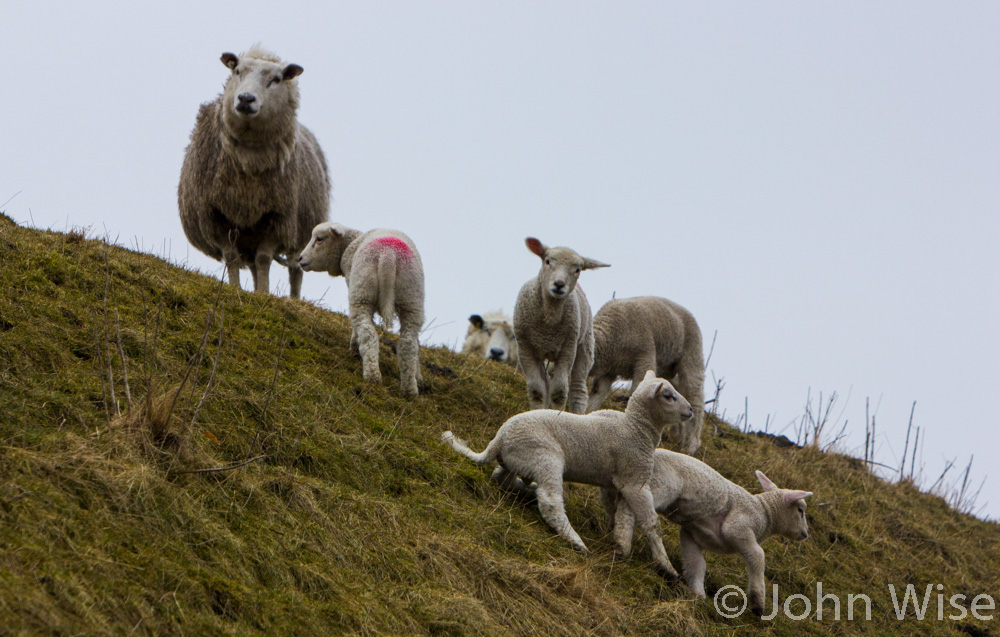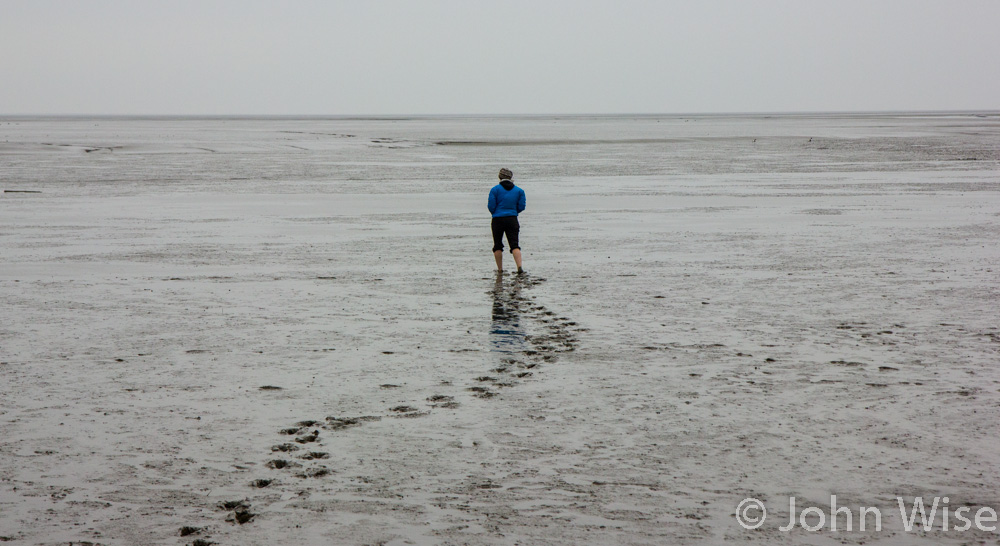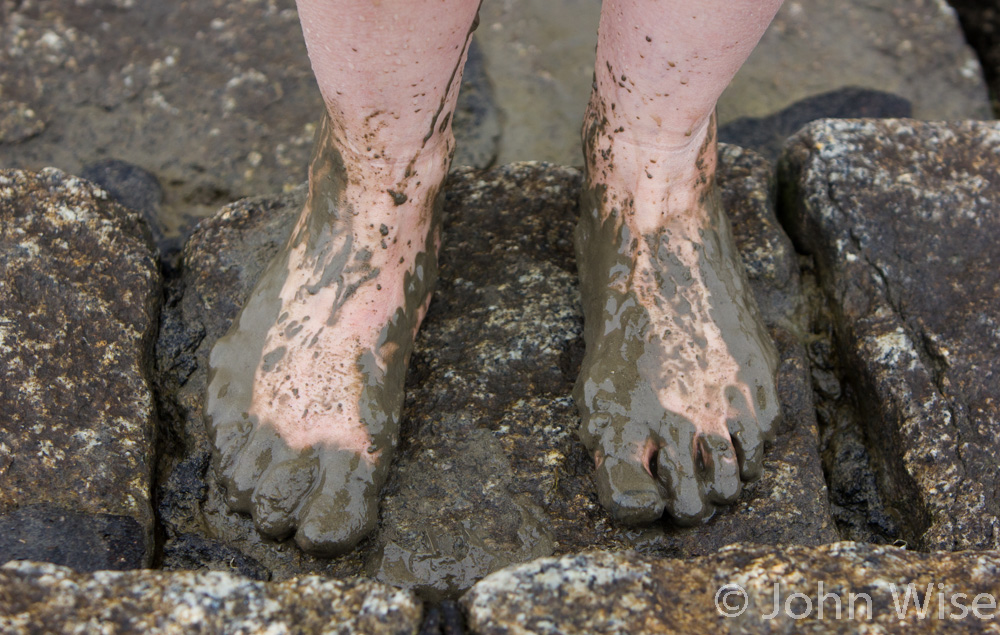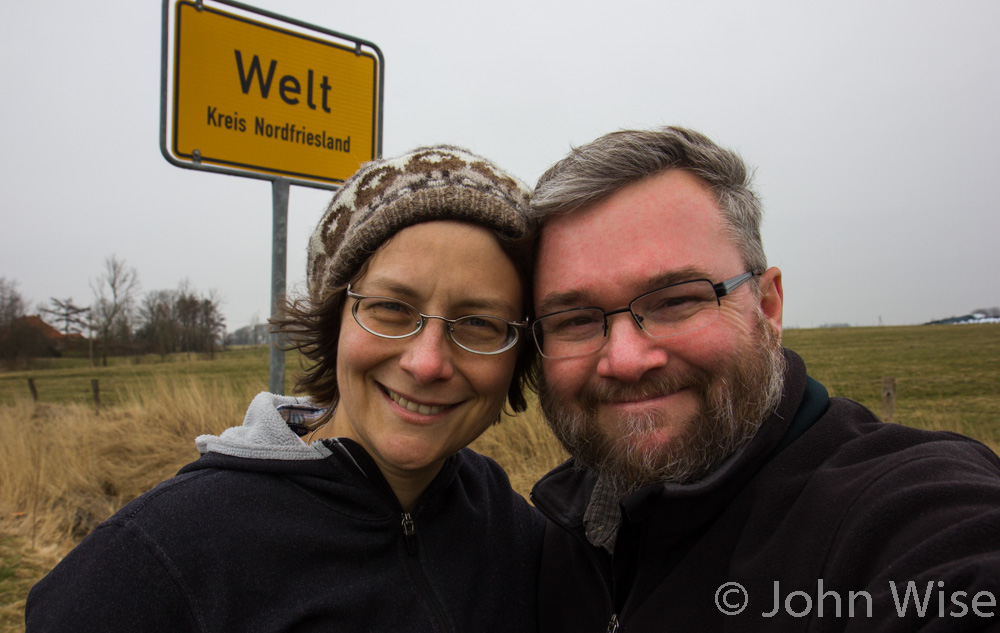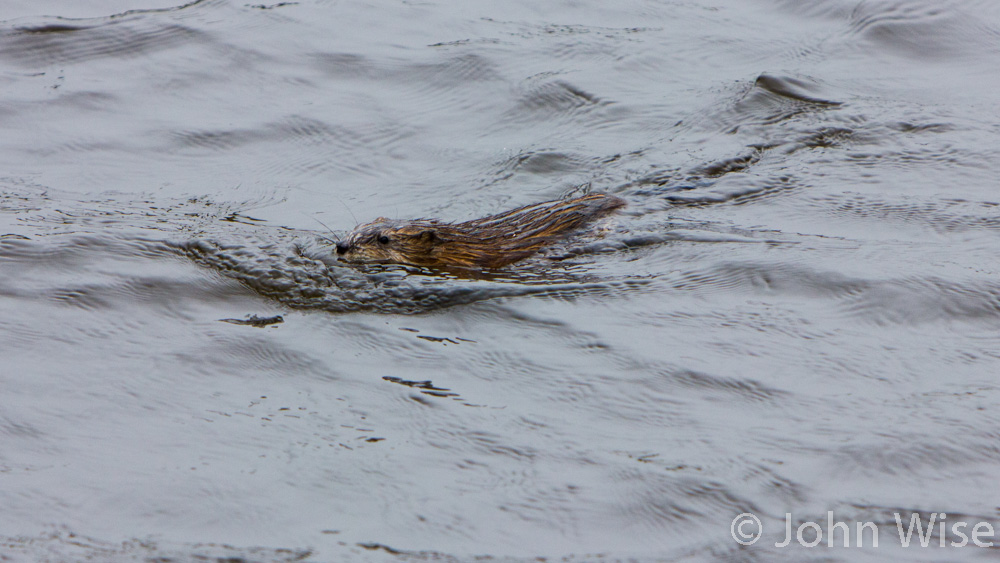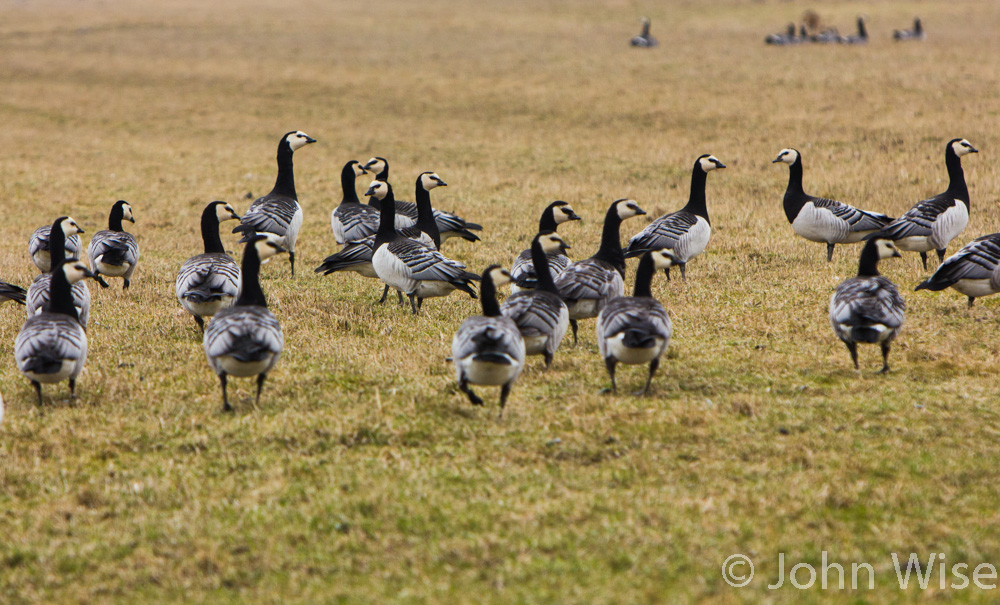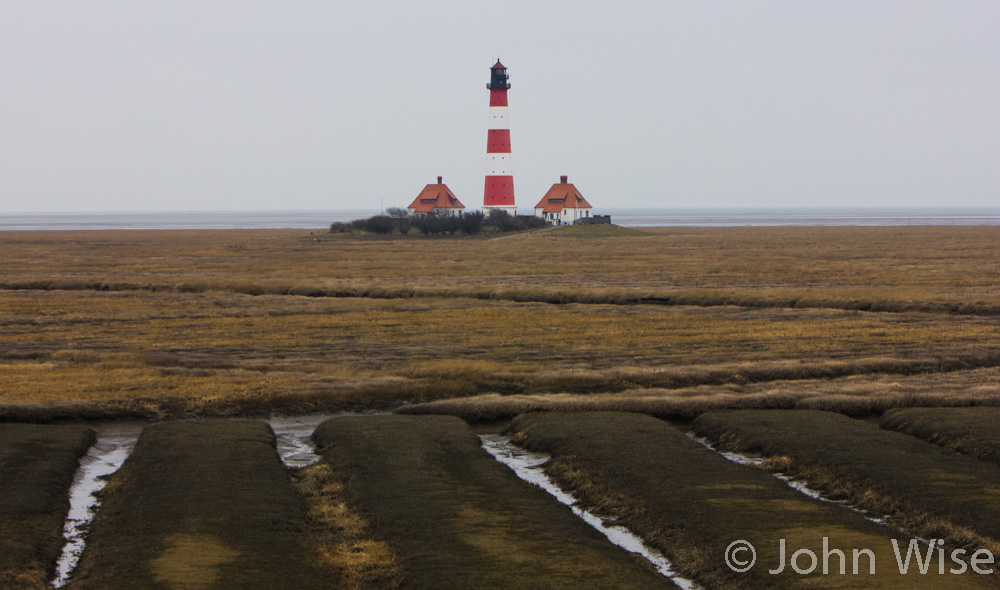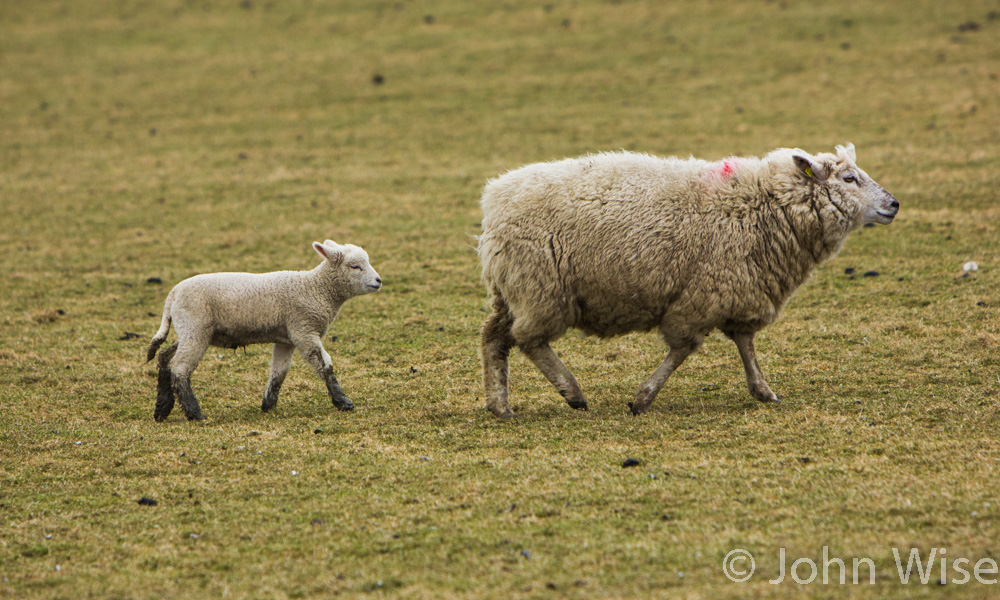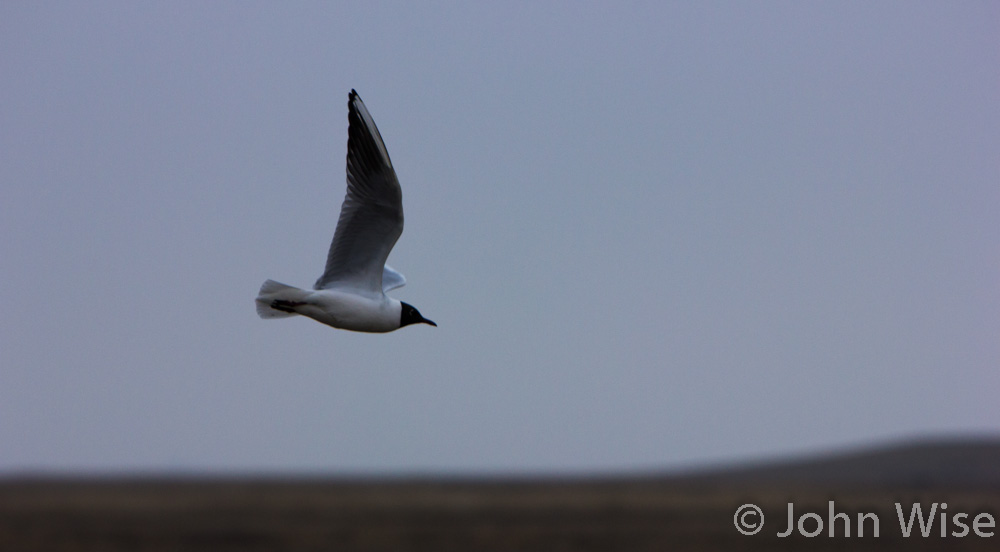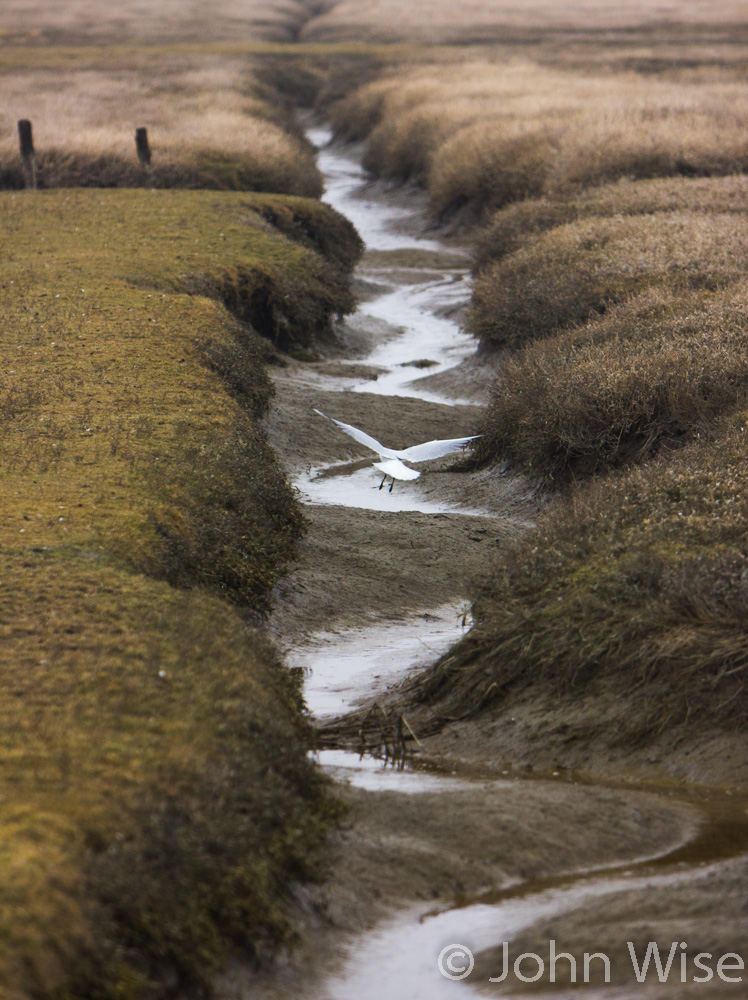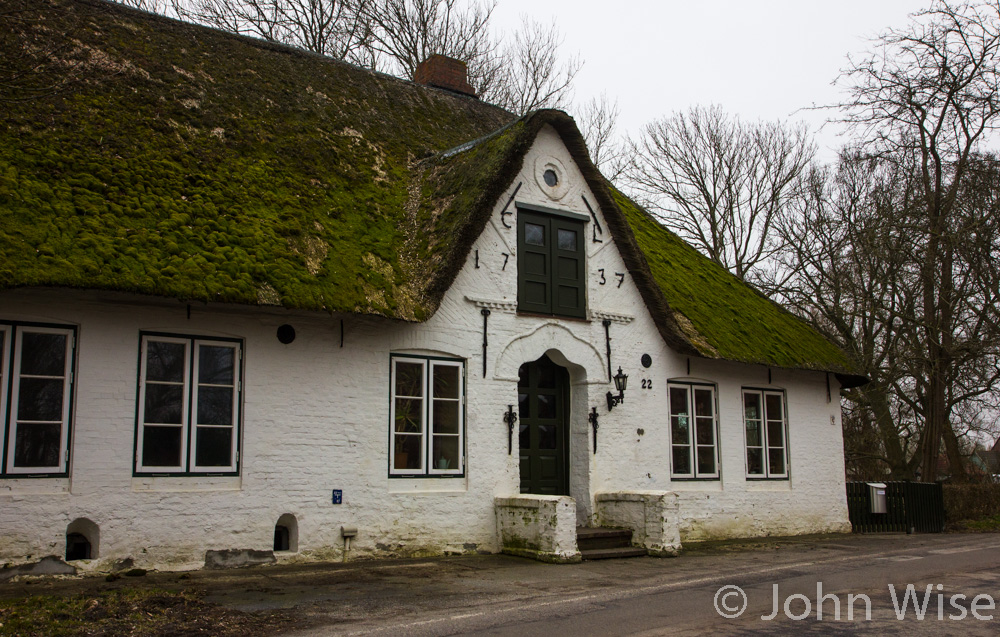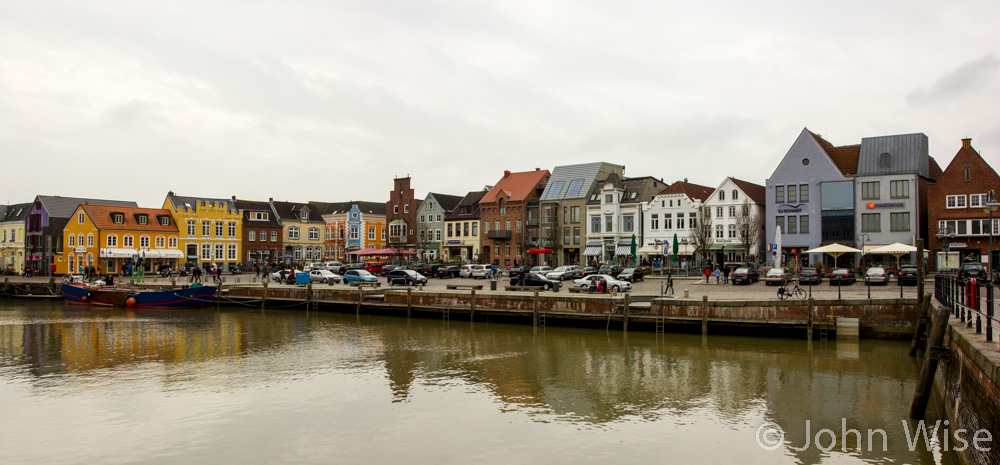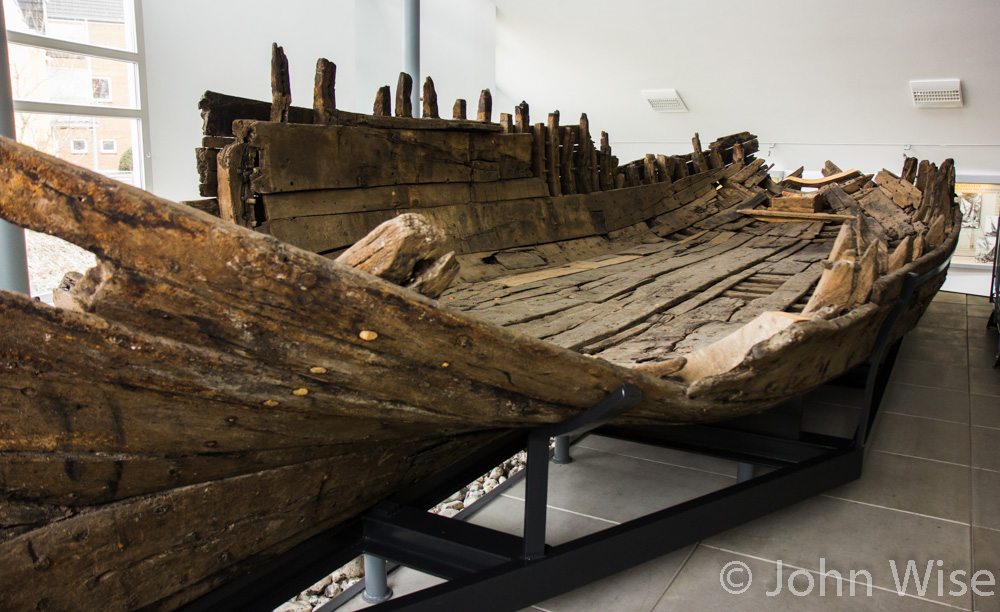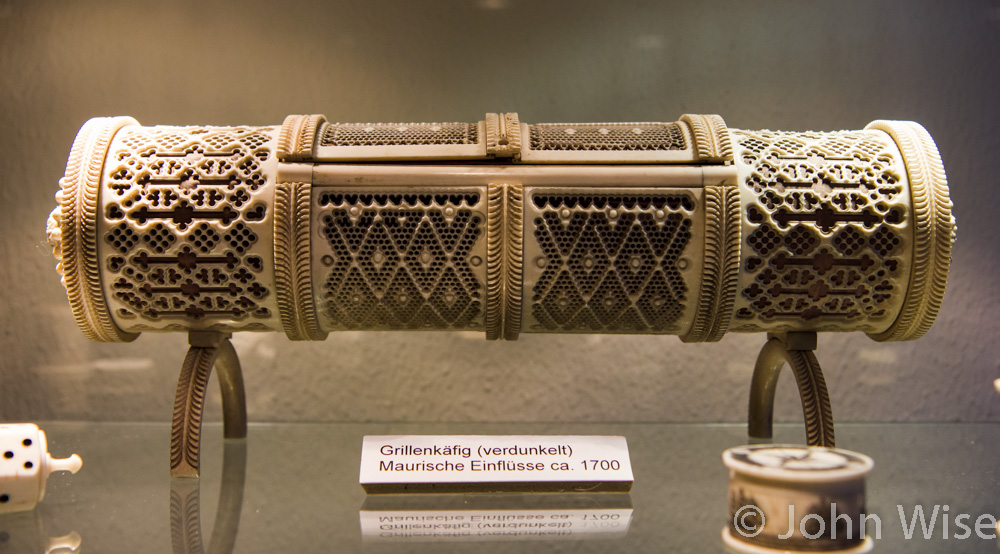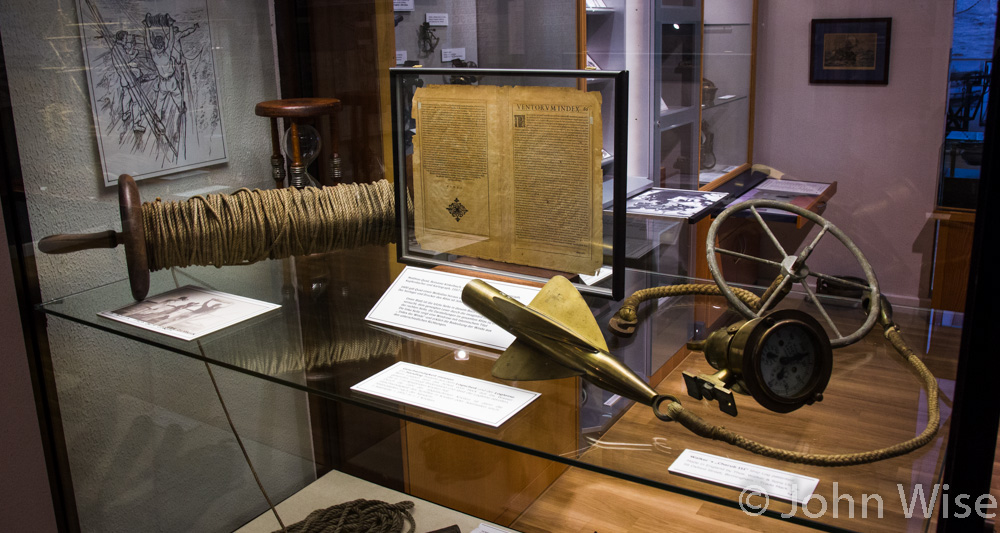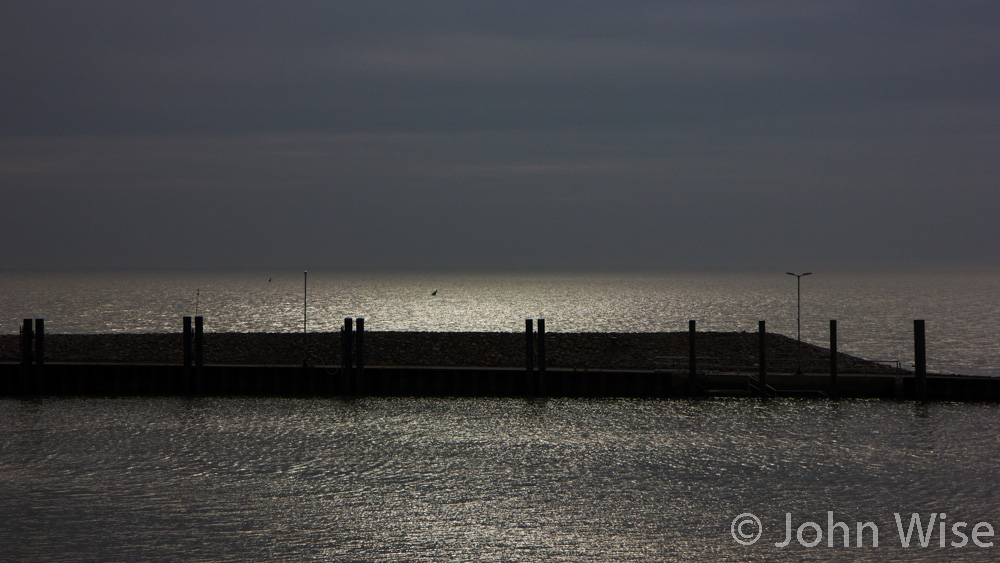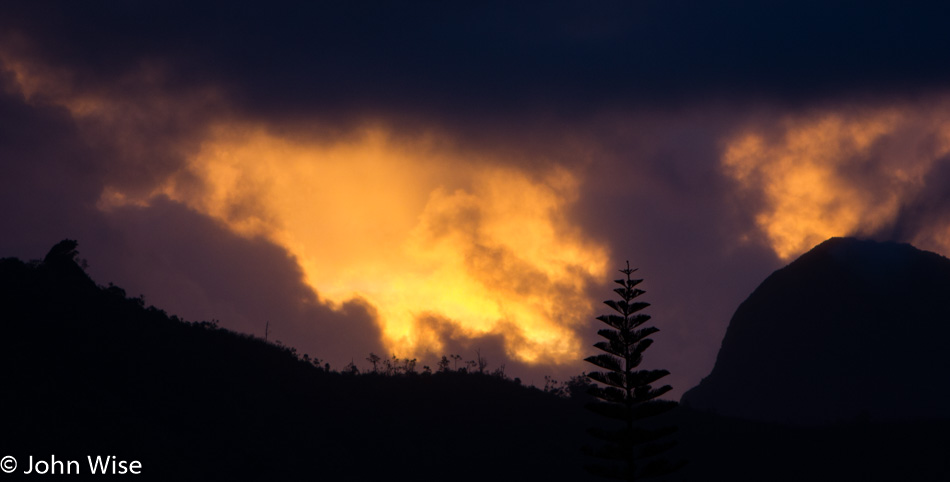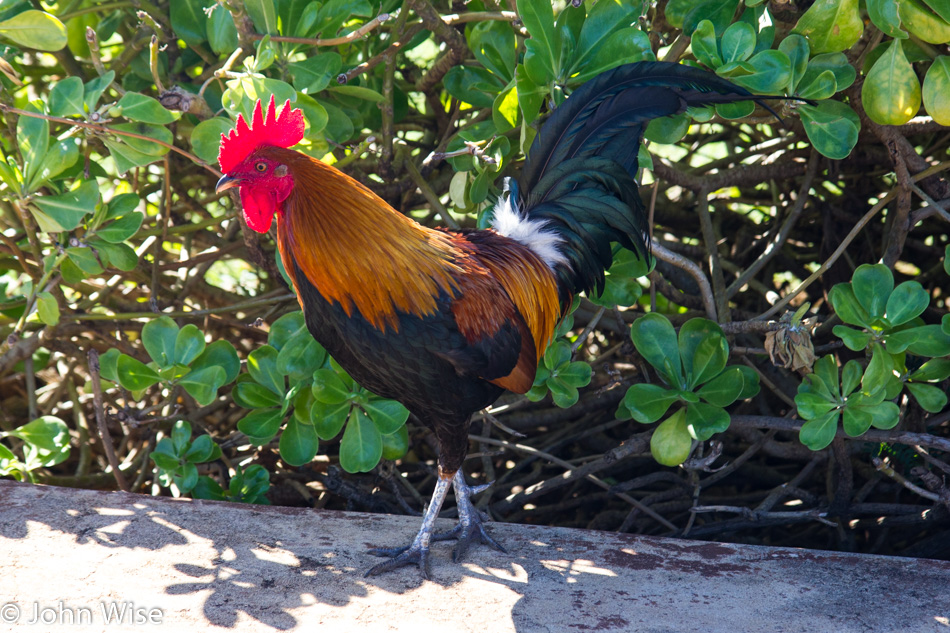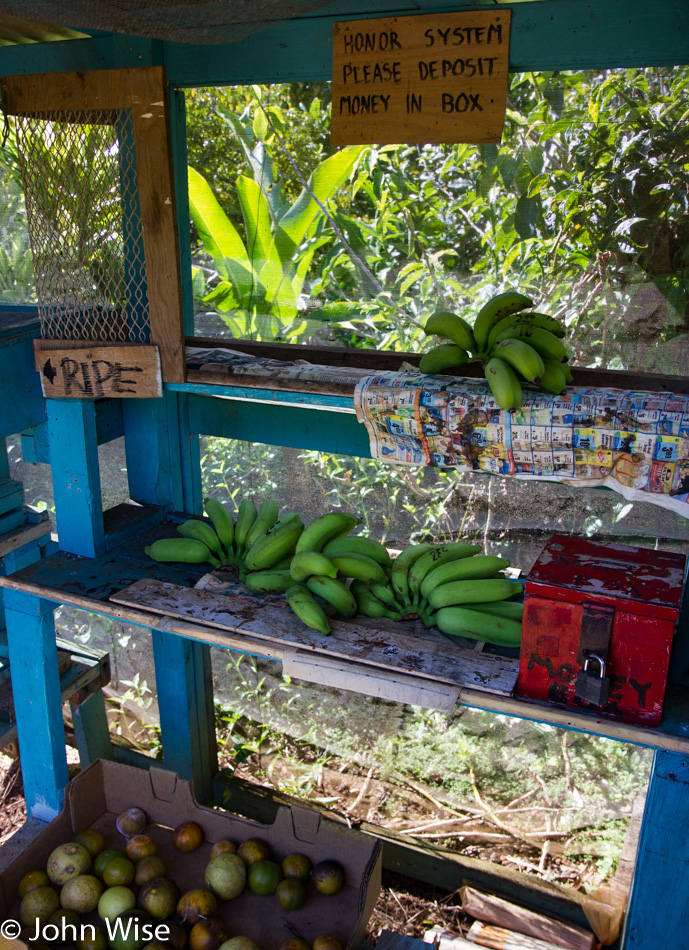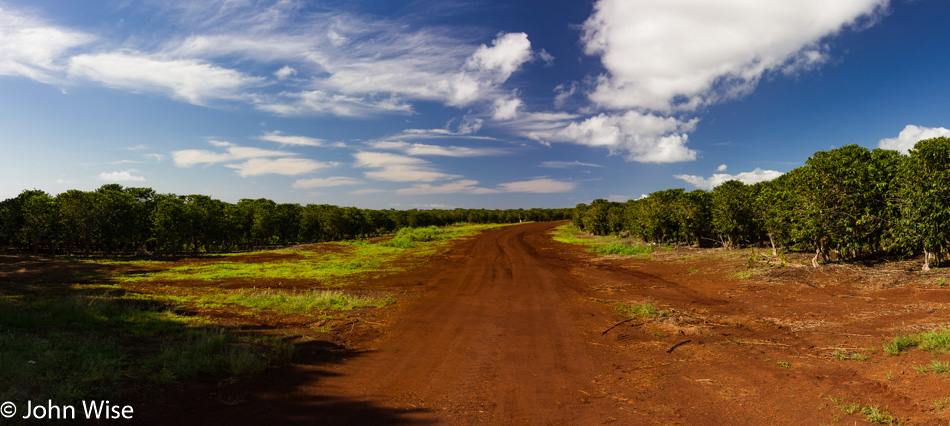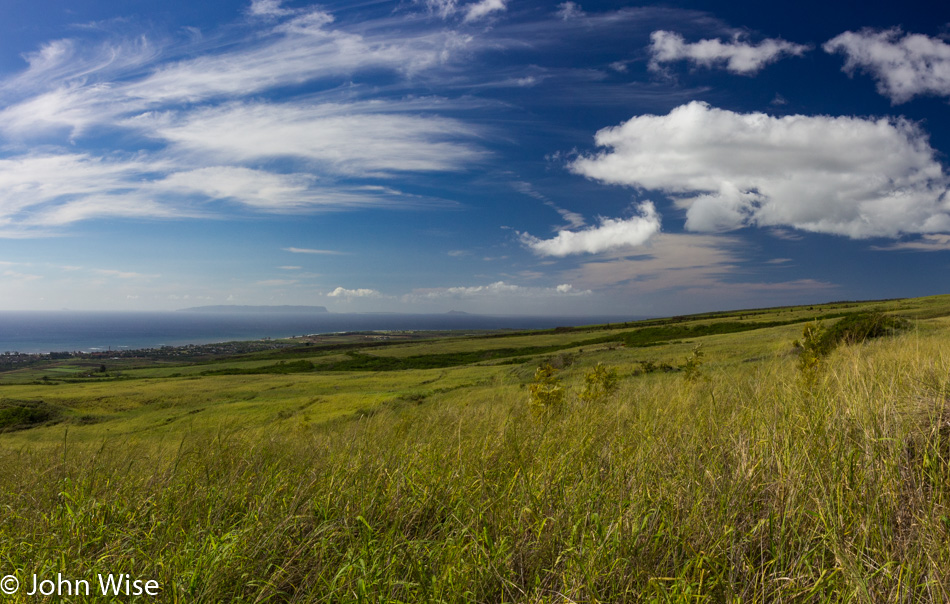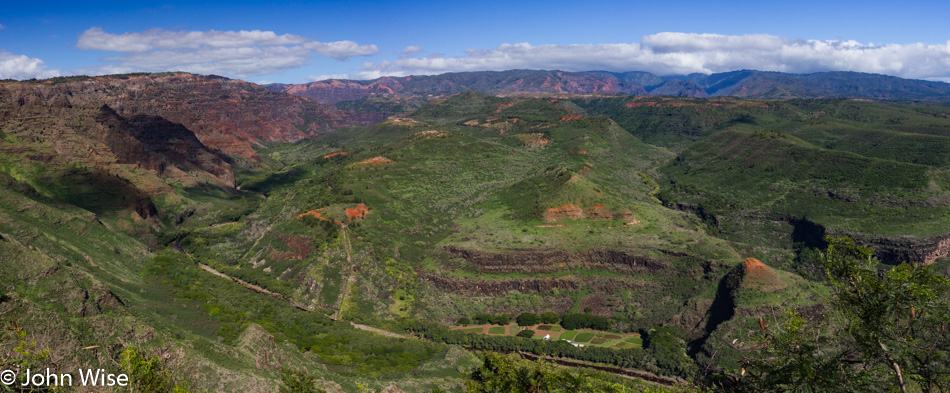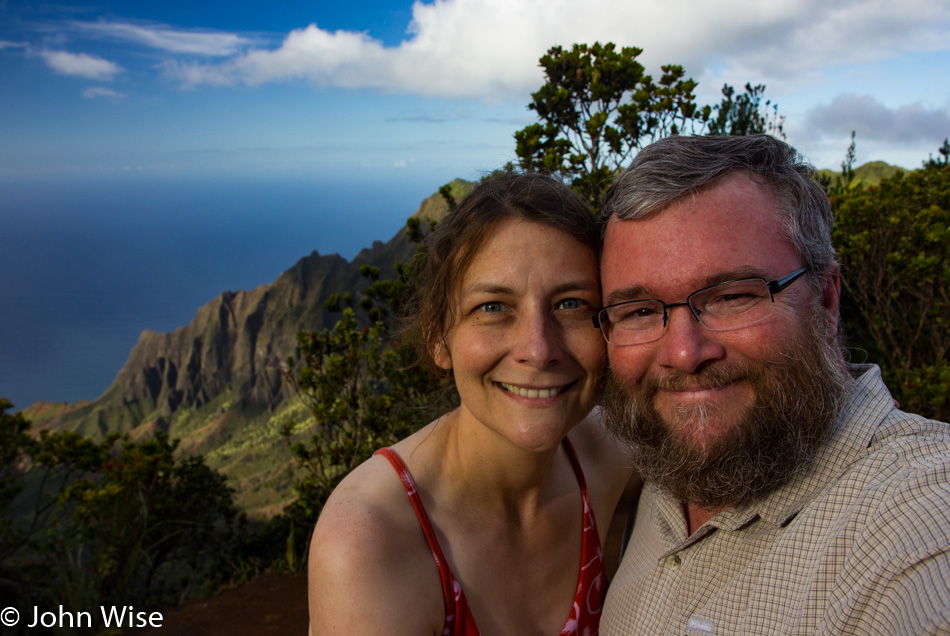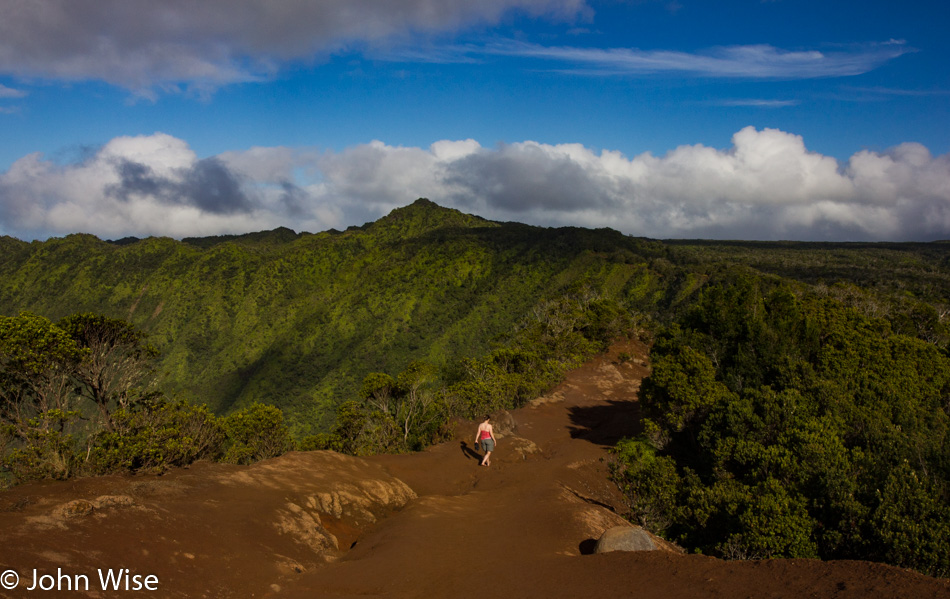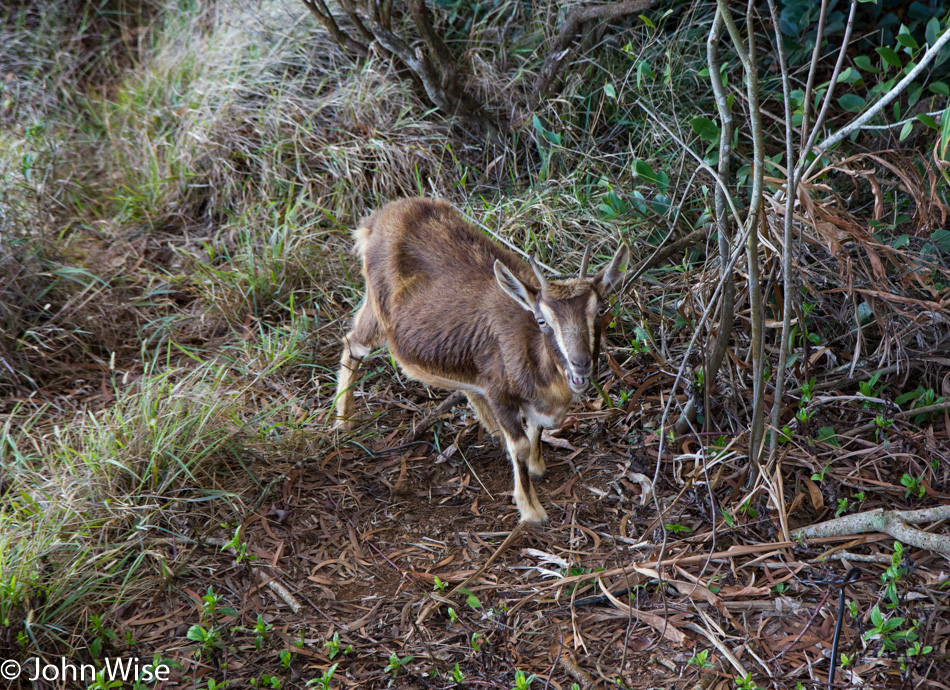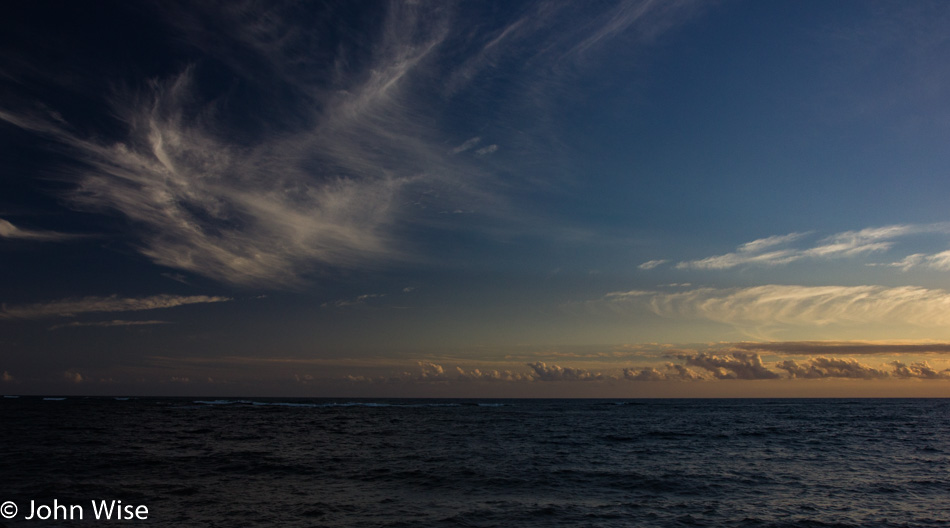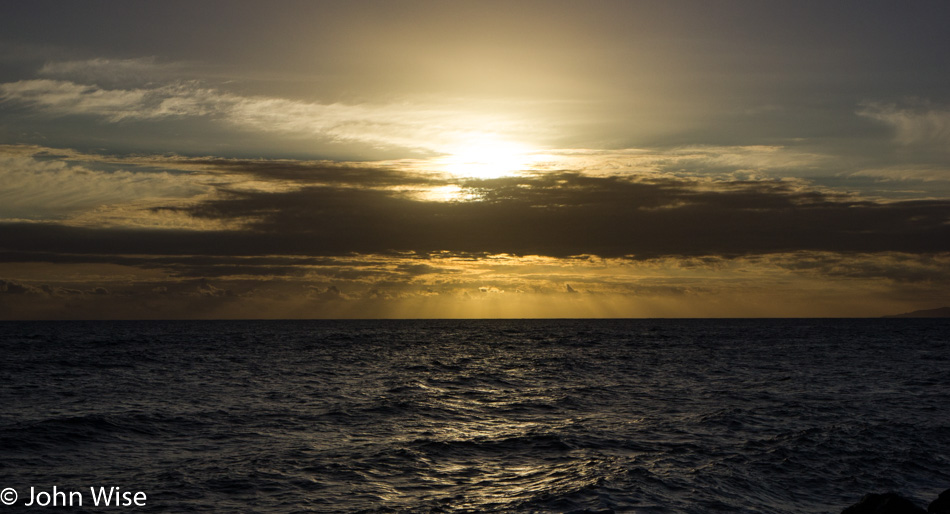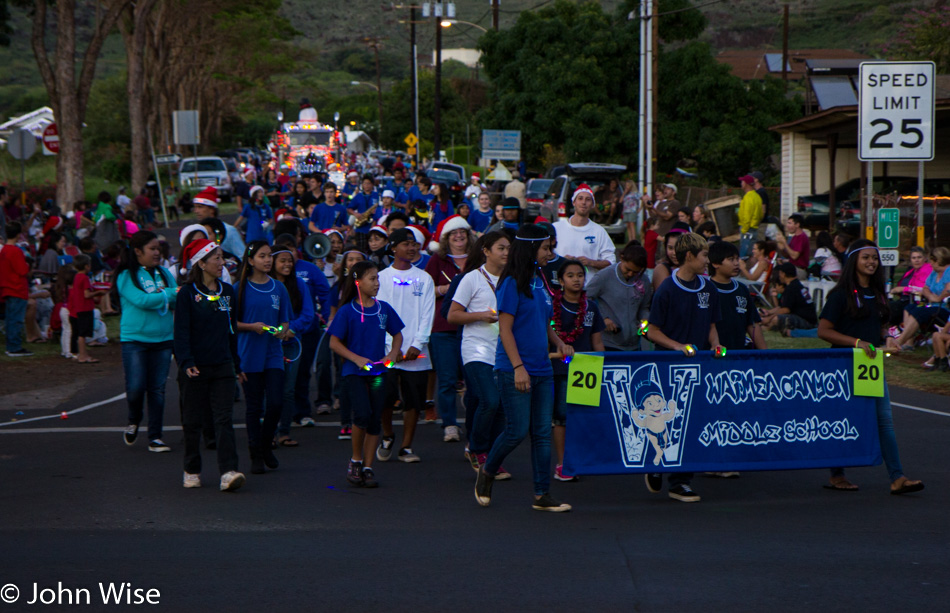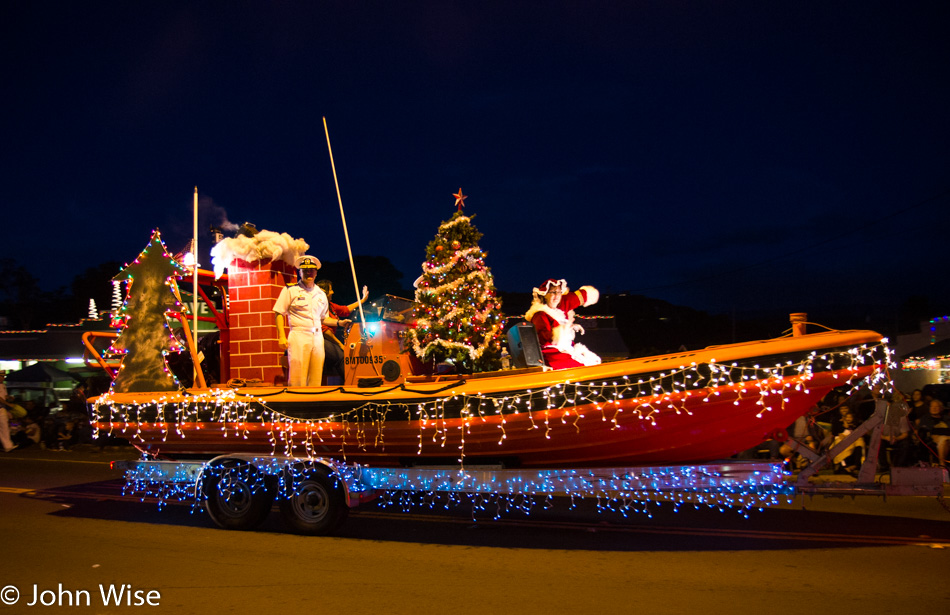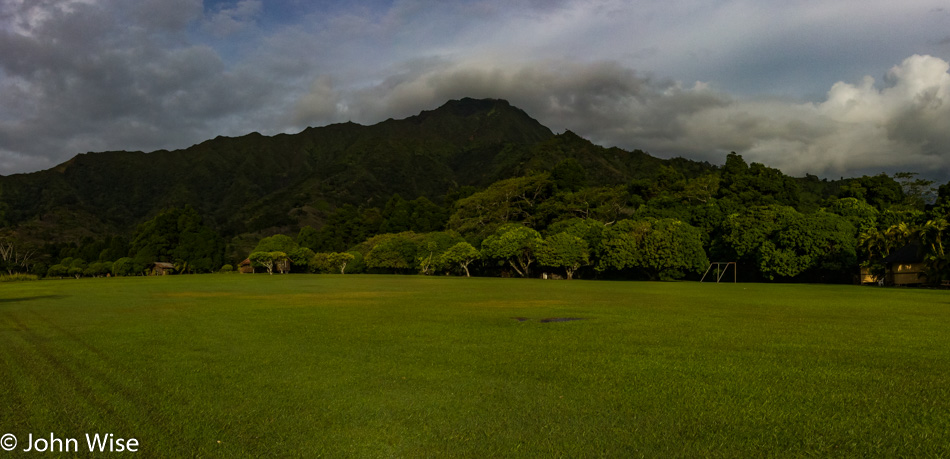
That’s funny it doesn’t look or smell like Sunday, but it is. Well, if it is Sunday, then that means we have to head into Lihue and leave exploring Kahili Mountain for another day.
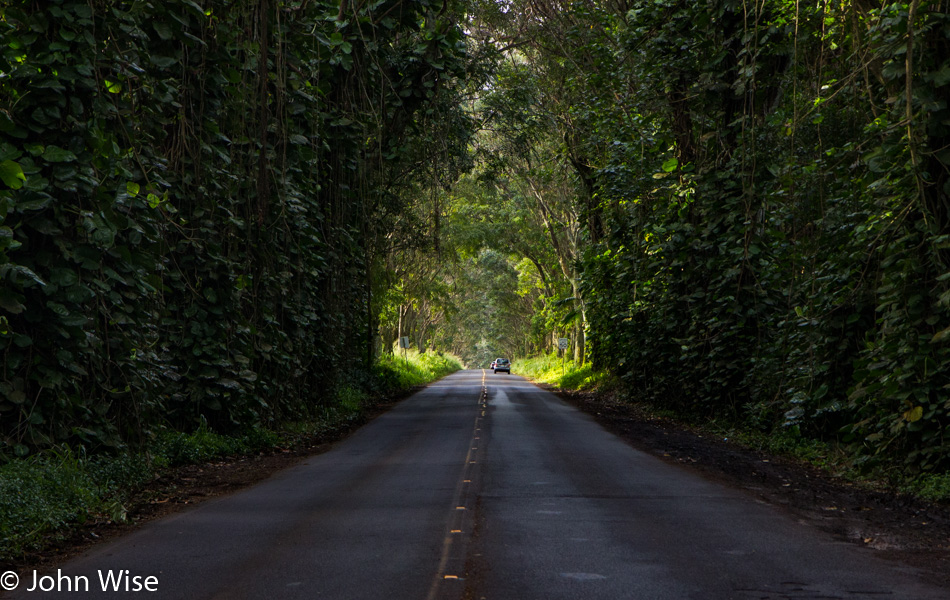
Hey, this isn’t the road to Lihue, and there’s no way we’ll be buying a Poke bento this early. Ah, we are just sightseeing before we get to our regularly scheduled activities. Wait a minute, we don’t have a schedule! Well, then, without anywhere we really need to be, I guess another drive up and down the tree tunnel is warranted.
Once back on the main road, we made it over to Lihue for breakfast at the Tip Top Motel Cafe And Bakery that’s been feeding islanders and visitors for nearly 100 years. The place is highly rated among locals, and we now understand why. It was packed and noisy, but all the same, we were seated pretty quickly. Our orders were taken within minutes, and coffee was delivered before we saw the menu, which was already at the table. Ten minutes later, my Moco Loco arrived, and Caroline’s banana pineapple pancakes with guava pineapple compote were placed in front of her. If we weren’t suffering from a wicked addiction to the Koloa Fish Market, we’d be wise upon a return visit to eat breakfast here every day.

We are on our way north, heading to Hanalei, as Caroline needs to exchange some ukulele sheet music that was misprinted. You can bet it will not be a direct out-and-back journey, as this beach stop attests. Which beach is this, you might ask? Who cares? It’s a beach on Kauai, and we were so rude as to carve our names into the sand, letting those who follow know that “We were here.”
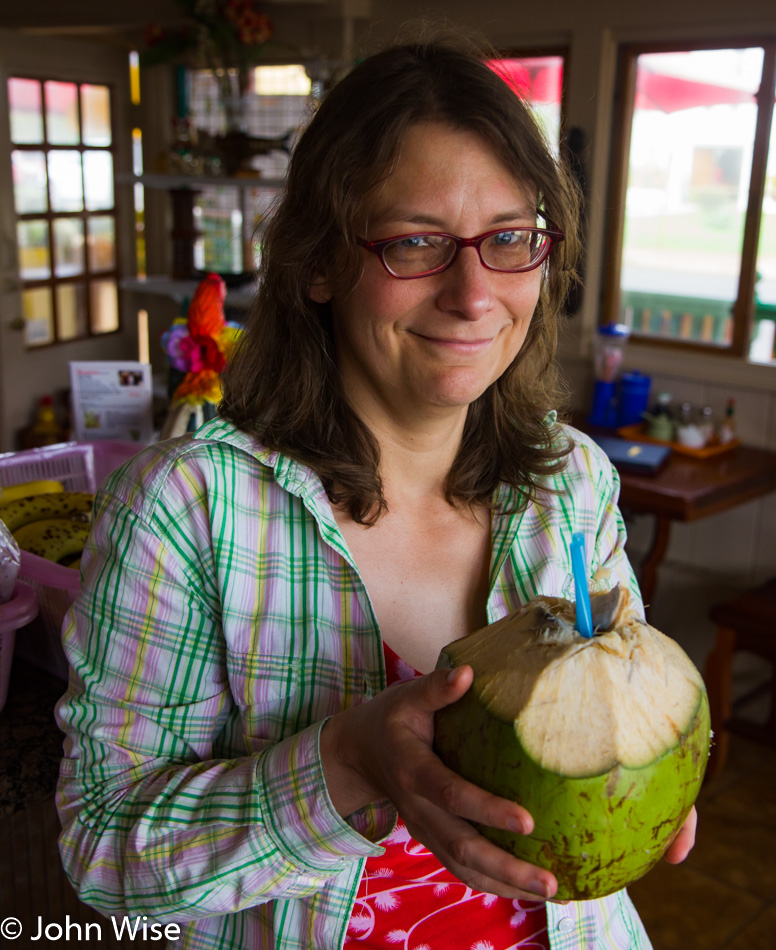
Roadside, fresh, chilled coconuts sounded like a great idea, and with nothing stopping us from indulgence, we obliged our hedonistic sides and packed in some more calories.
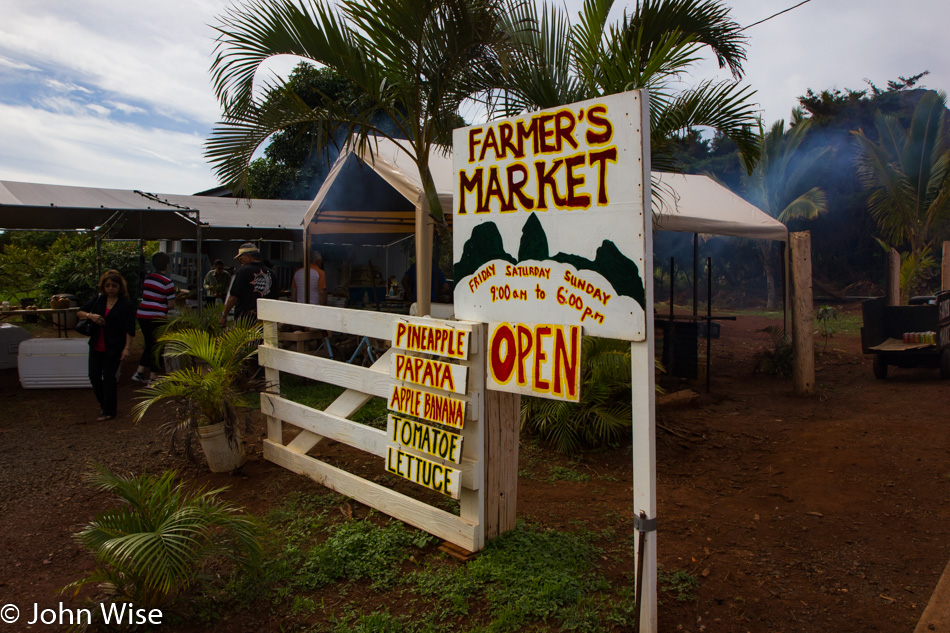
Another reason to snack has presented itself with the Anahola Farmer’s Market. That’s right, you read it correctly, they are selling apple bananas, and we are buying them because one can never eat enough apple bananas when in Hawaii. As for that sample of BBQ pork, I tried that morphed into a plate to go; we’ll just call that “breakfast dessert.”
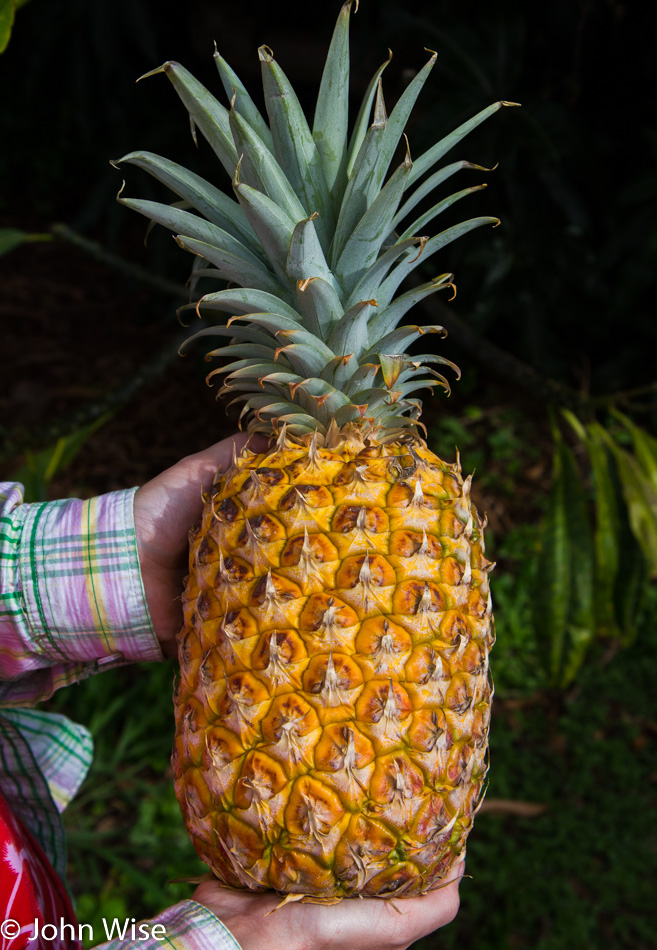
There is no pineapple such as these on the mainland of America. These giant, ripe, and incredibly sweet, perfect pineapples are unique to Hawaii. We may eat this later today, tomorrow with breakfast, or on Christmas morning before we board our flight back to Arizona. The cold reality that we are down to our last 48 hours in Hawaii is better left for dealing with in the minutes before we drop the rental car, for now, we need to return to the exploration of paradise.
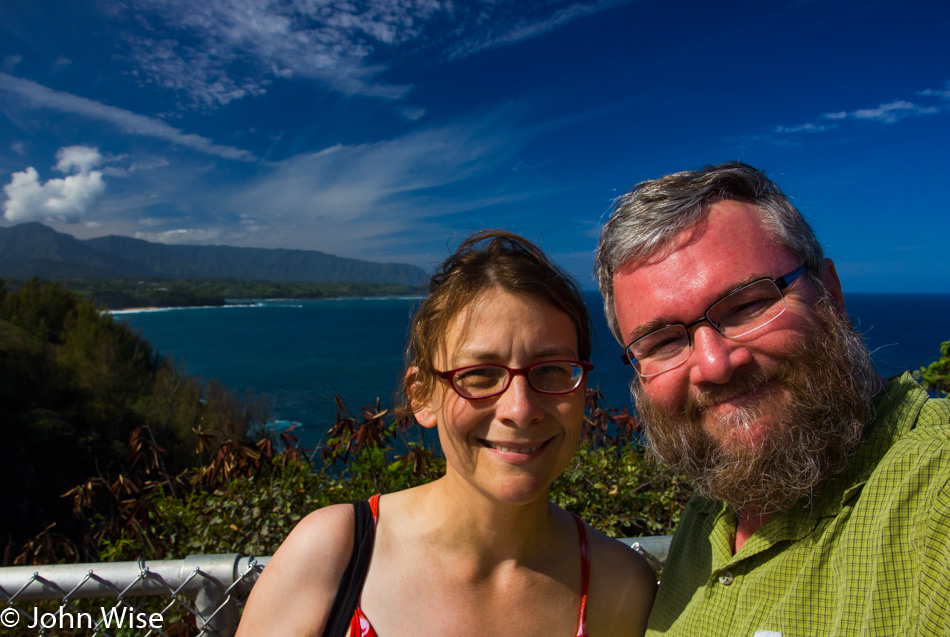
Kilauea Point National Wildlife Refuge is a fond, fond memory from our first visit, and with perfect weather, we would be fools not to stop again. That there is a Junior Ranger Program here is an added bonus, and within minutes of arriving Caroline has her booklet and walks along noodling over the questions.
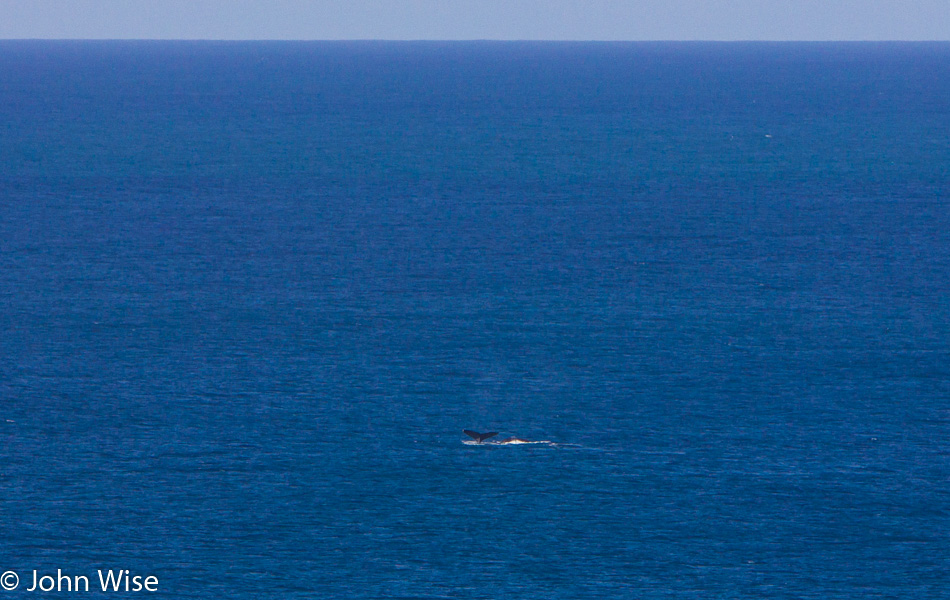
It’s mere minutes later before we see a pod of whales offshore, and while once again we are denied seeing a breaching cetacean, we do get to see plenty of tail fins, spouts, and arching backs.
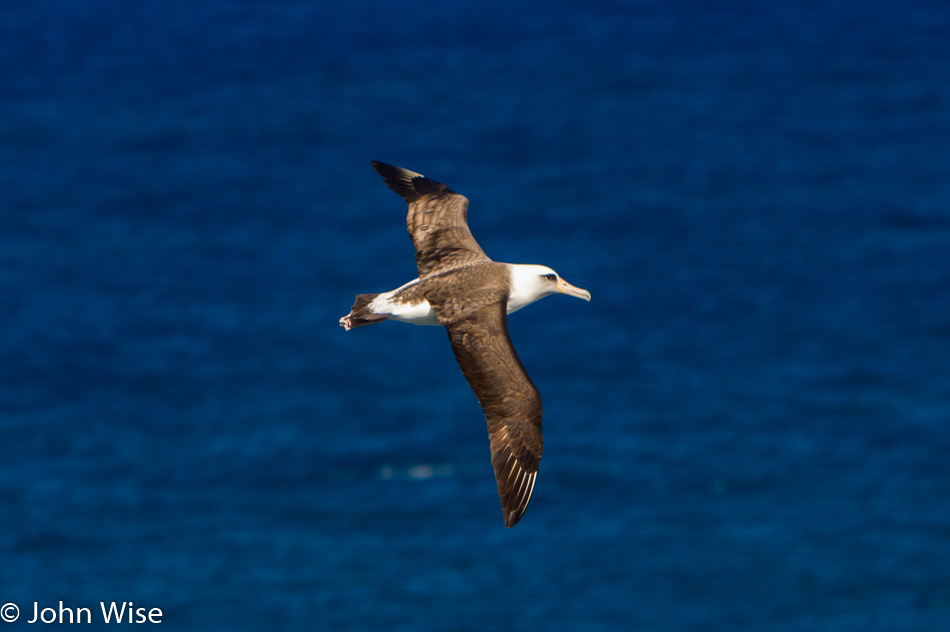
Can one have a favorite bird? While I certainly have my least favorite bird in city-dwelling pigeons, I probably only know of a fraction of bird species from around our globe, and there are many beautiful specimens, but the albatross certainly holds a special place in my imagination. Just the idea that this bird can fly non-stop around the earth without landing while expending little to no energy is a feat of evolution that boggles my mind. Then consider that we know that they can live up to at least 66 years of age and that once bonded with a mate, they will stay together until the end of their lives. Of course, there are those beautiful eyes they have that I’m too gullible in assigning anthropomorphic qualities to. I’ll just go and blurt it out right here: I love the albatross.

Check out the nene, also spelled nēnē, otherwise known as the Hawaiian goose. This native of Hawaii is only found on the islands out here in the Pacific and is speculated to have arrived on the islands when they were blown off course at some time in the past. They are friendly, curious birds with a unique soft call compared to the harsh sound of the common goose.

The Kilauea Point Lighthouse could not stand out in greater contrast to the blue sky, deep blue water, and greenery out here on this spit of land.
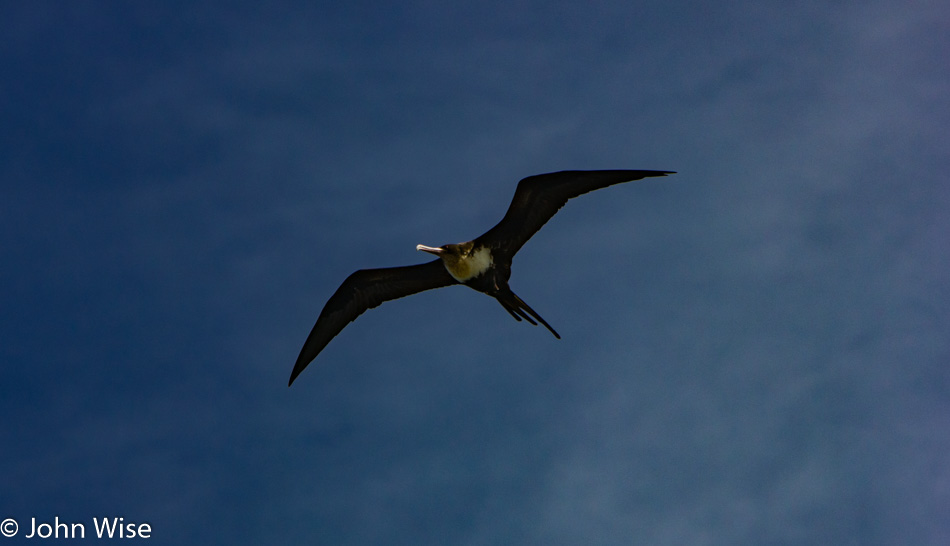
The sky is also full of frigate birds, and while a little bit buzzardly looking, they are graceful and draw my admiration for their ability to live free, fly around, and not be subject to the arbitrary laws and whims of power-hungry bird enforcers.

I don’t really care if they are red-footed or blue-footed because this bird has the word booby in it. Yeah, buddy, this is the red-footed booby. I tried a good two or three minutes to get a pair of boobies in my shot, but all I got was this bird in front of the ocean. I’ll be looking for a pair of boobies to photograph and will get back to you, the reader, should I see them.
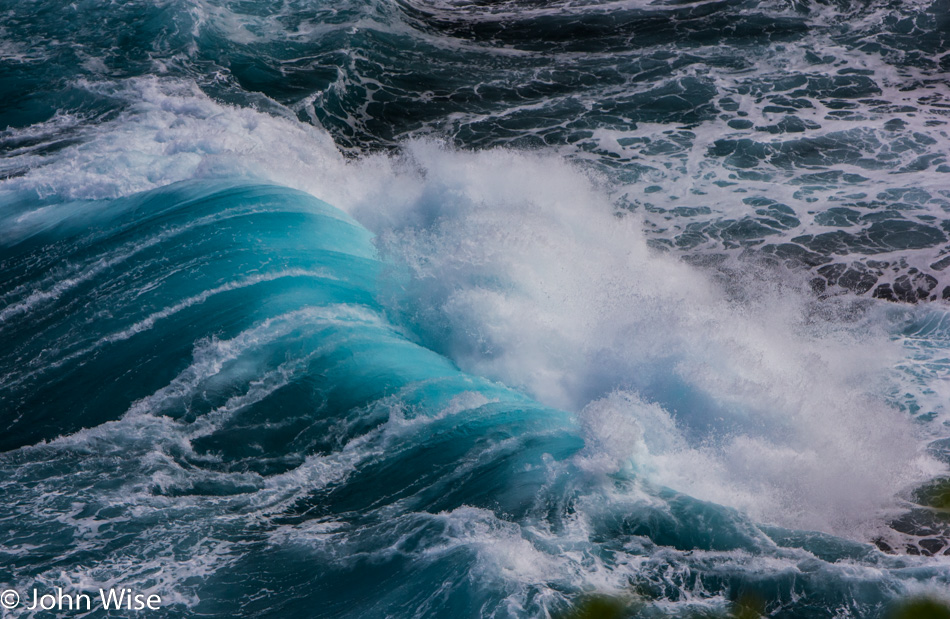
The ocean churns hard around Kilauea Point, and at times, we watched waves break on a cliffside, sending its waters a good 80 feet straight up. With birds, dolphins, whales, a lighthouse, and perfect weather all around us, it is hard to figure out what to give our full attention to.

You should know just how badly I want to reach out and feel how soft those feathers are around the nene’s neck. These official State Birds of Hawaii are protected and endangered and so even if my judgment is occasionally poor, I will respect the request not to interfere with these gorgeous birds.
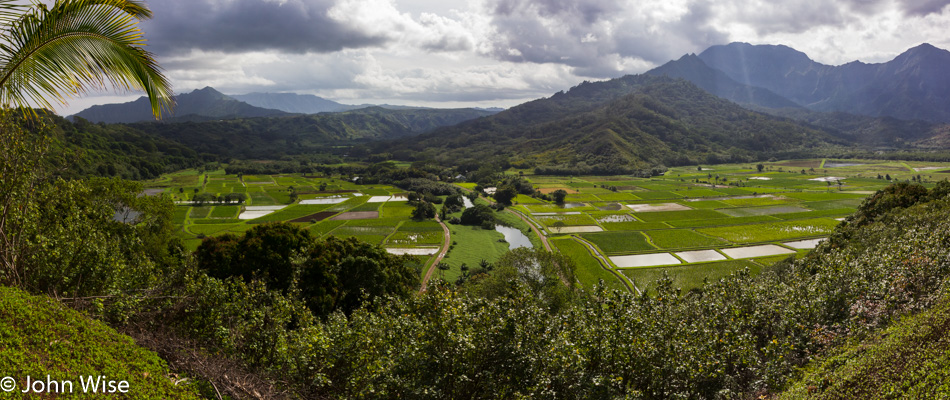
The other day, when we were up and purchased the ukulele, the sky was overcast, and this overlook of the Hanalei National Wildlife Refuge was jam-packed with others who had the same idea of snapping this image. This spot on Kauai is probably the second most famous after the Napali Coast and is certainly an iconic location. Down below are paddies with taro plants, which are essential to the Native Hawaiian diet of both poi and lau lau.

Here’s the view from below the overlook of those plots of taro. The last time we were here, we didn’t make time to follow the narrow road that was more of a wide sidewalk leading into the refuge; today, we did. The road might go for a couple of miles, but it was hard to tell, considering how slow we were traveling. There are thickets of bamboo, a couple of homes, a trail we won’t take this visit, and a slow-moving waterway that is the likely source of irrigation of all this taro.
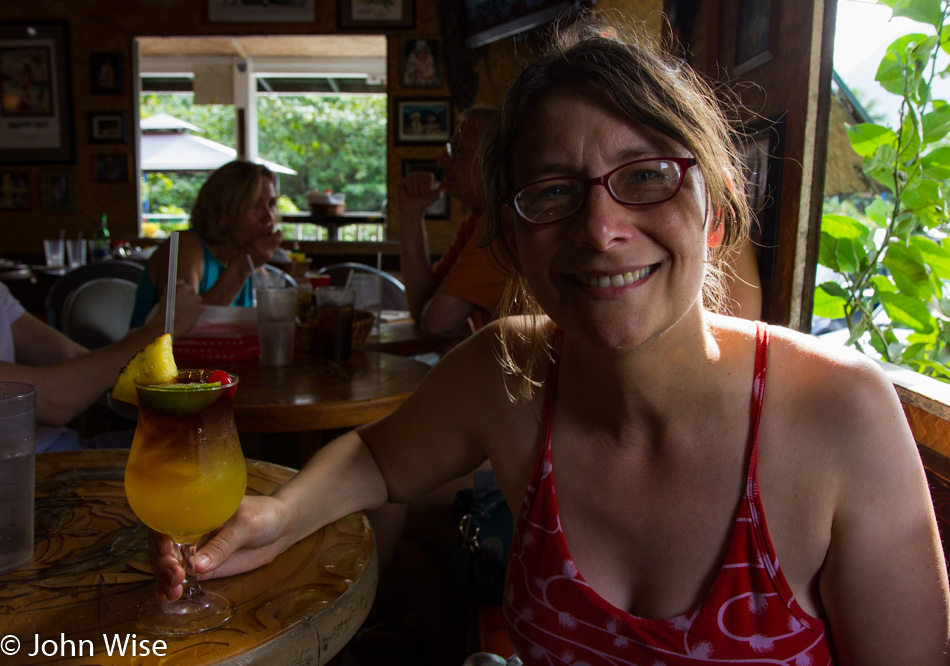
Over at Hanalei Strings, we learn that there are no refunds, only exchanges. That was okay as Caroline opted to leave with more yarn; as I went to pay for the difference, the guy waved it off, saying it was for the trouble of driving back up, like driving around a Hawaiian island is a hassle or something.
The next stop was at Tahiti Nui. Why Tahiti Nui? Because Caroline, prior to leaving for Hawaii, let it be known that she wanted umbrella drinks on this excursion, and the other day at the Limahuli Garden a lady told us of a particularly nice dive bar. While it was specifically described as a dive bar, we were reassured that it was a great dive bar. While I, being the teetotaler, opted for Julia’s Iced Tea, which was a mix of iced tea, lemonade, and guava juice, Caroline “started” with their famous Mai Tai. Sitting there, taking in the sights of bar culture, we couldn’t help but do some noshing until Caroline decided on her second drink, a lilikoi margarita. With the umbrella drinks checked off the to-do list, one of us walks back to the car, and the other weaves.
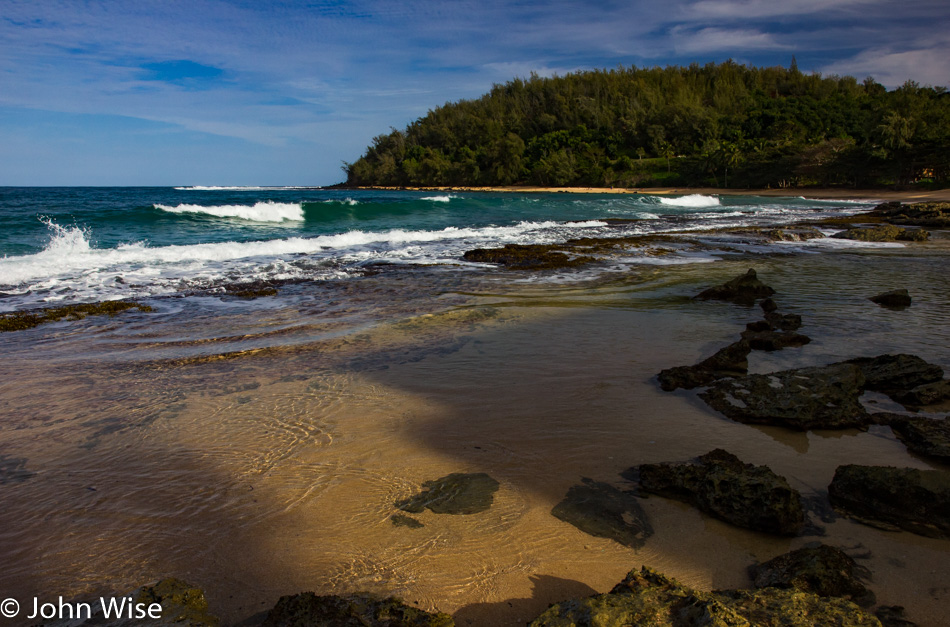
A small apparently little-used road led us to a small cove. There are no facilities, no lifeguards, and apparently, clothes are optional.

When we were finally ready to leave that isolated spot of tranquility, the clouds were moving in, suggesting that another spectacular sunset was being scratched off the itinerary. Over to Starbucks, we went and with coffee in hand, we walked around. Wouldn’t you know it, there’s a man talking to a woman while holding a piglet. Turns out the woman is his girlfriend who works in the shop; we volunteer that we are certified expert piglet caregivers and would gladly watch his new pet while he properly visits with his girlfriend. So here we are, just hanging out in Kapaa, drinking coffee and chilling with a piglet cradled in my wife’s arms because that’s how we roll when on the isle of Kauai.

Sadly, the owner came back for his little black pig, which was okay as I would have had no idea how we’d ever get it on a plane to Arizona. Before returning to the cabin, we stopped at Walmart which turns out to be the best place for cheap souvenirs to drag back to coworkers in Caroline’s office. For our friend Rainy, we found some Hello Kitty pineapple-flavored marshmallows.
We packed up a day early so our last night would be as stress-free as possible. I headed to the shower outside, and Caroline pulled up the ukulele and tried playing. I say she “tried” playing because she’d chosen to try Aloha Oe, and in between the tears, she would have to stop and catch her breath. I listened to her through the walls and couldn’t help but feel teary-eyed with her as her romantic notions were affecting both of us.
